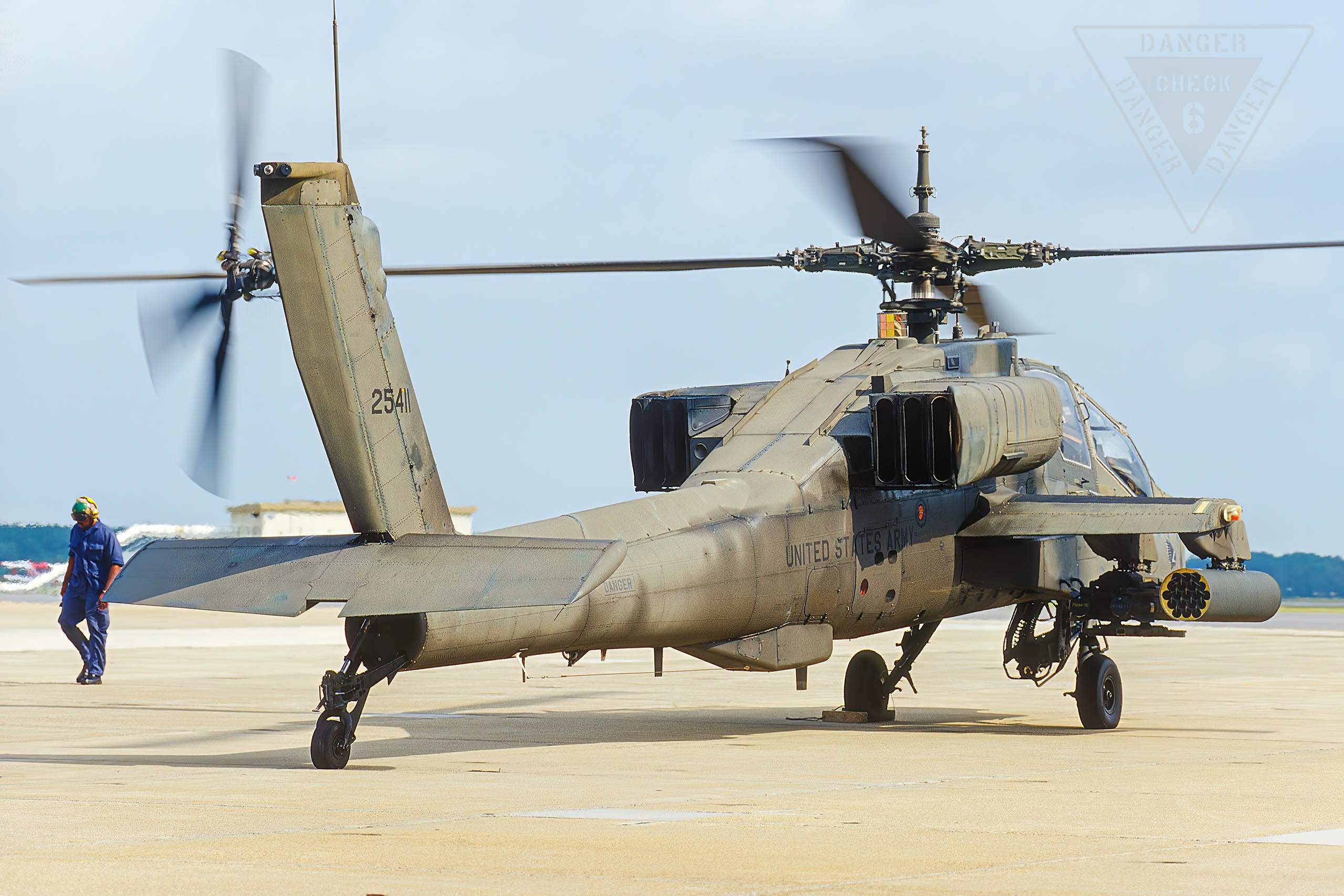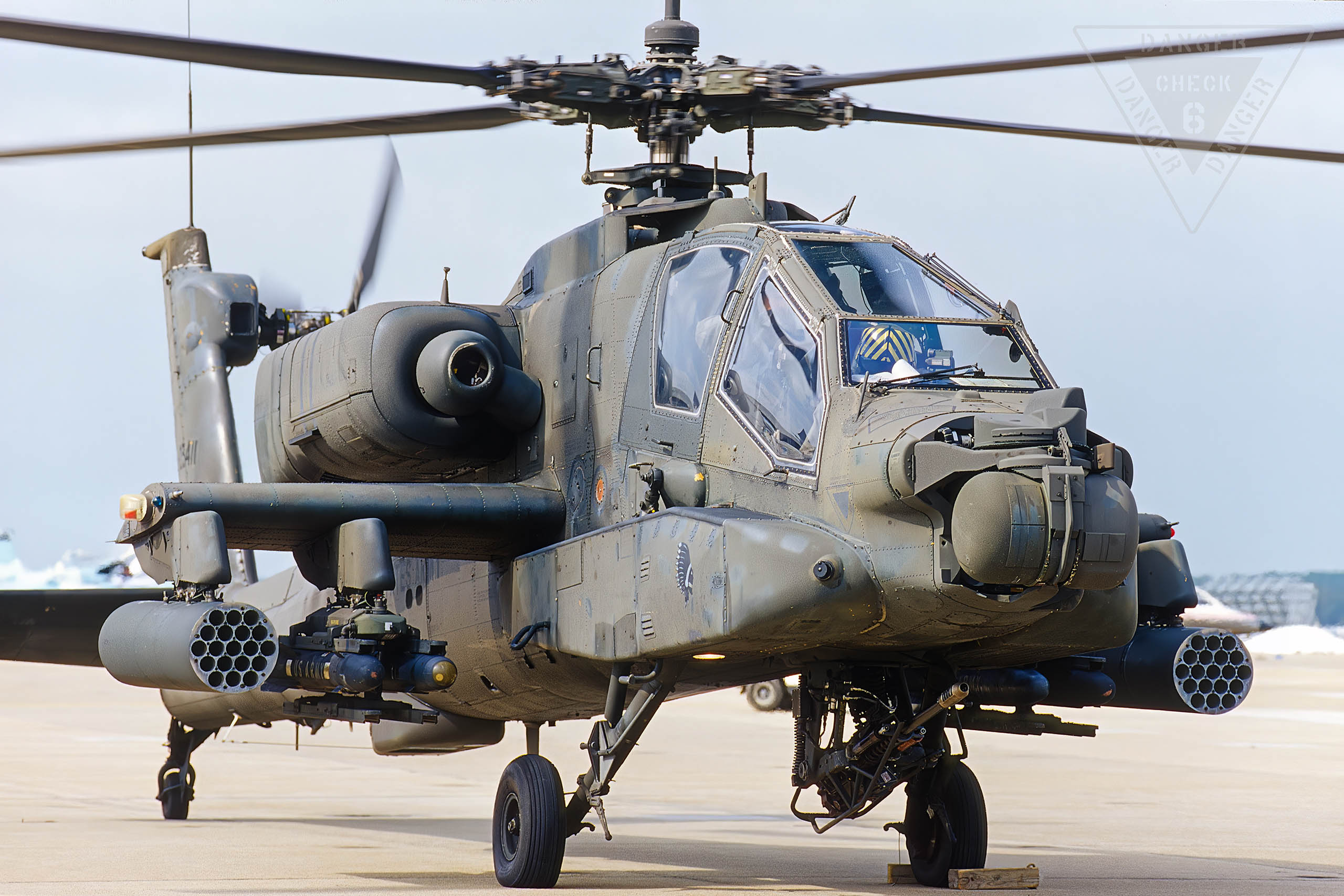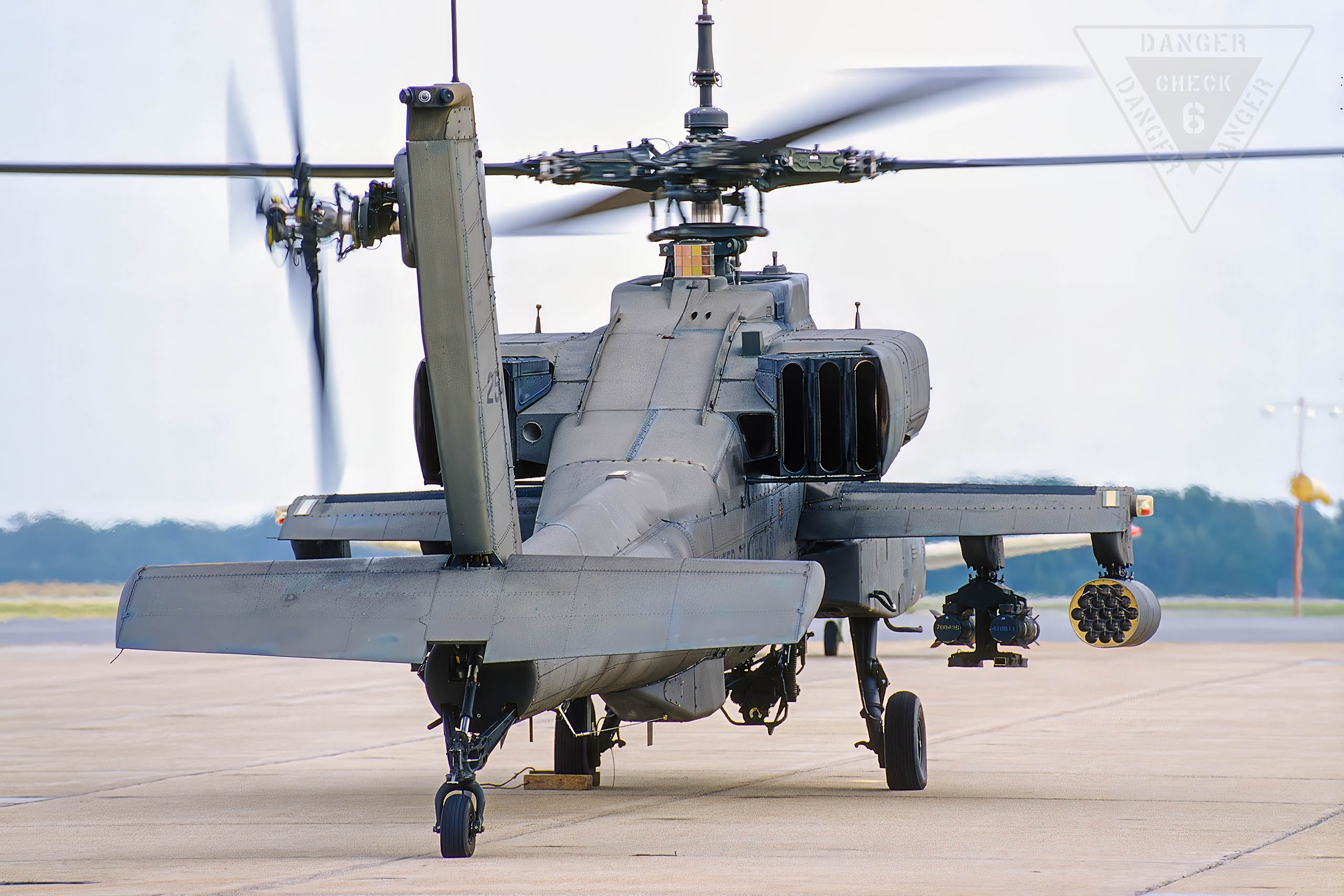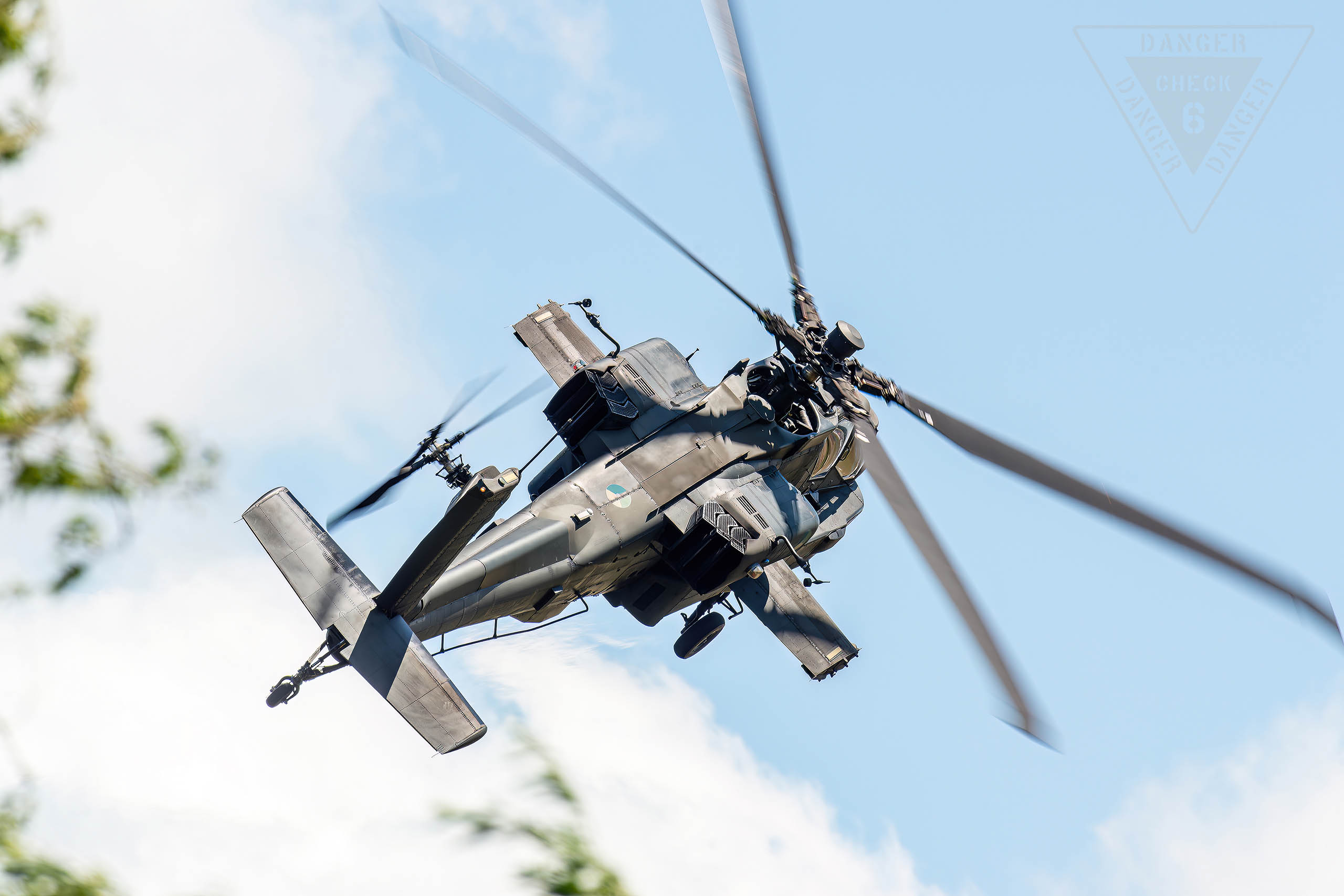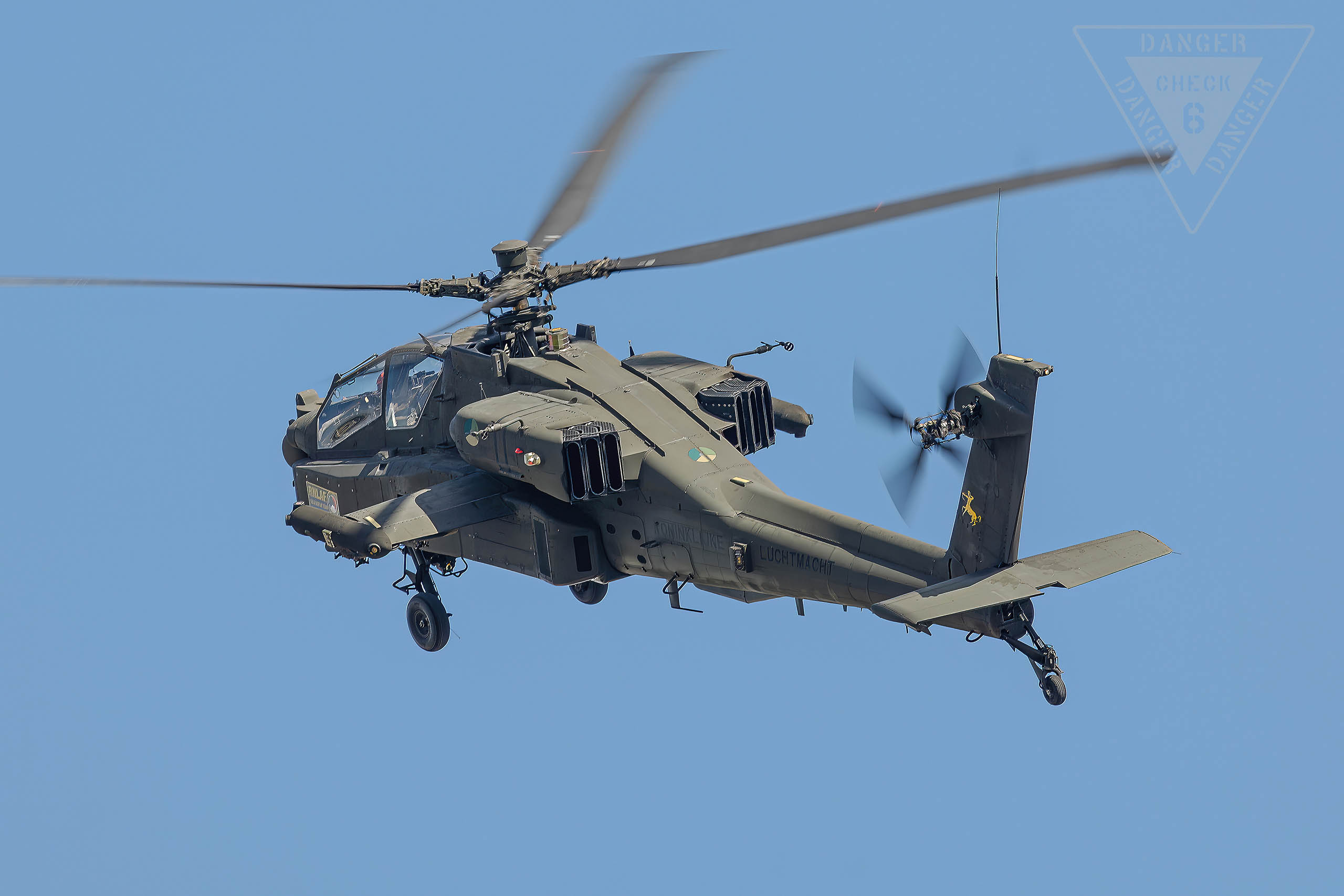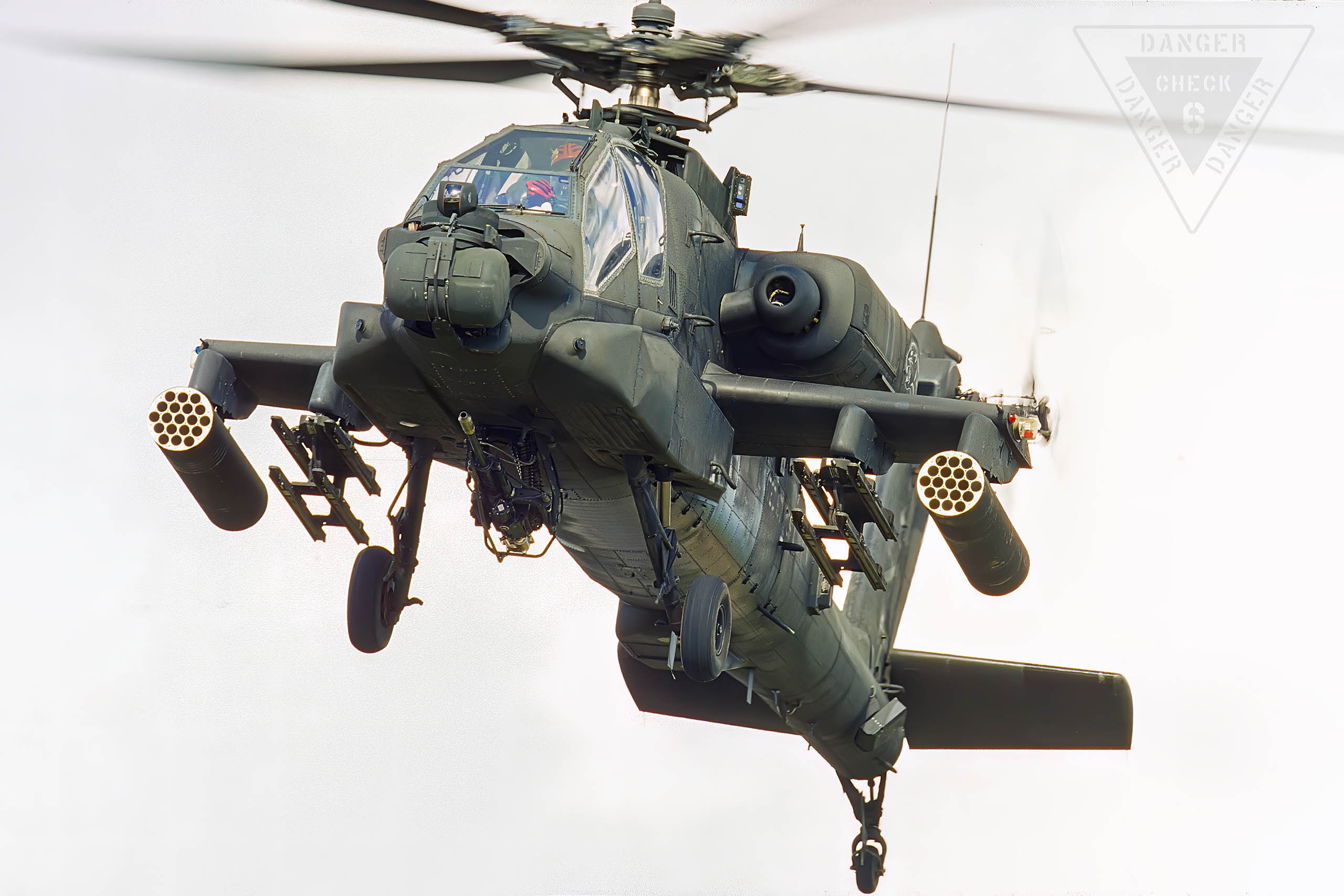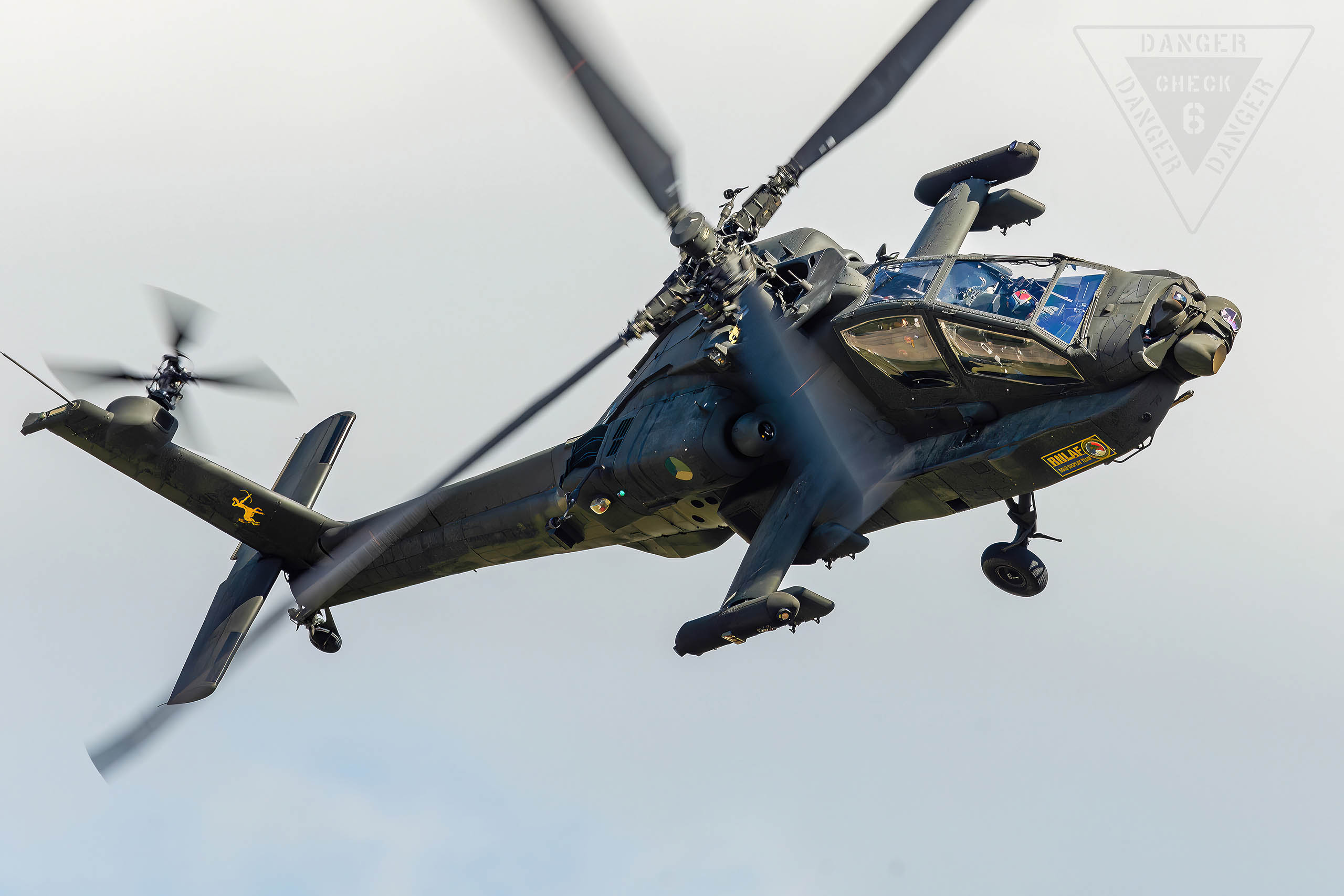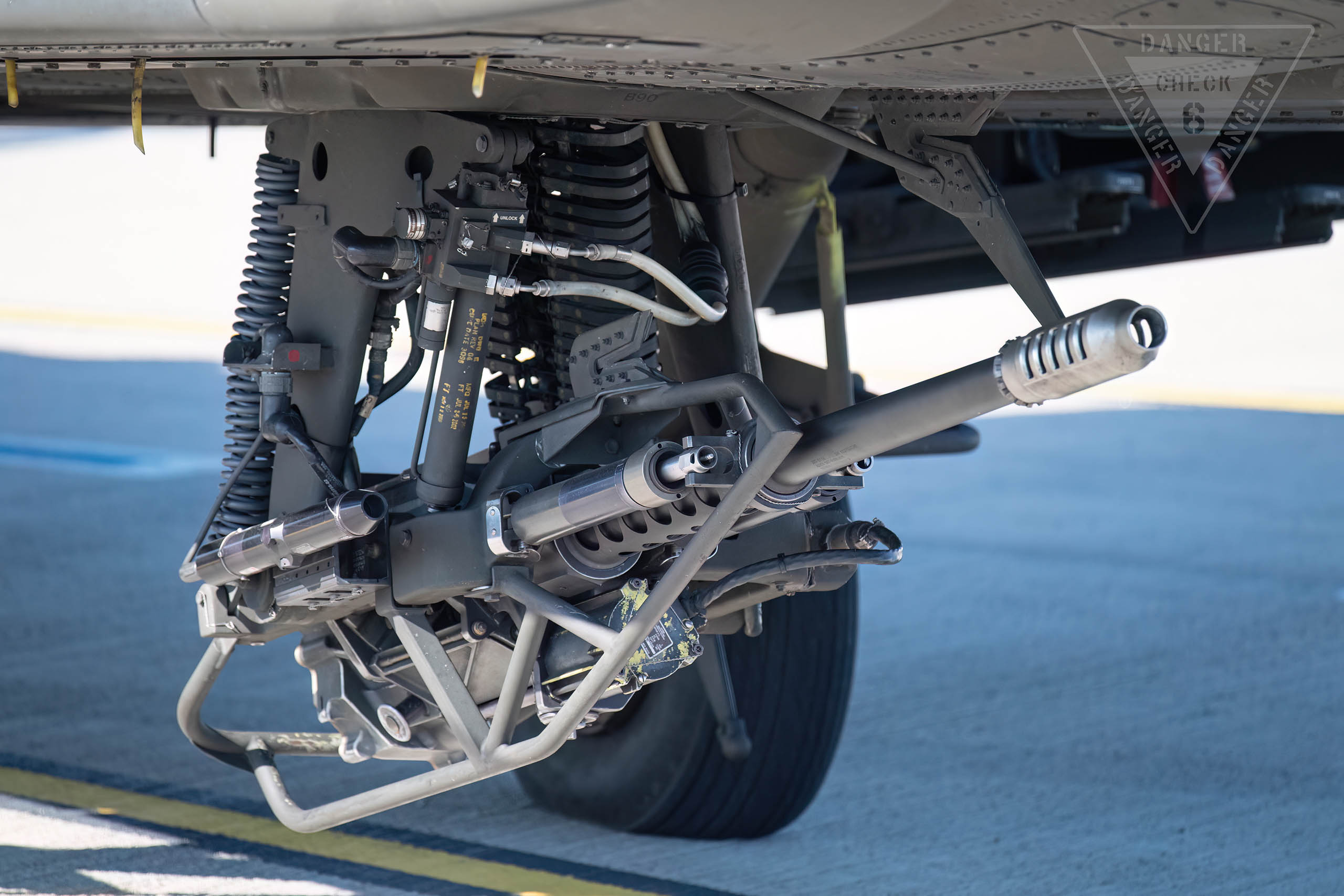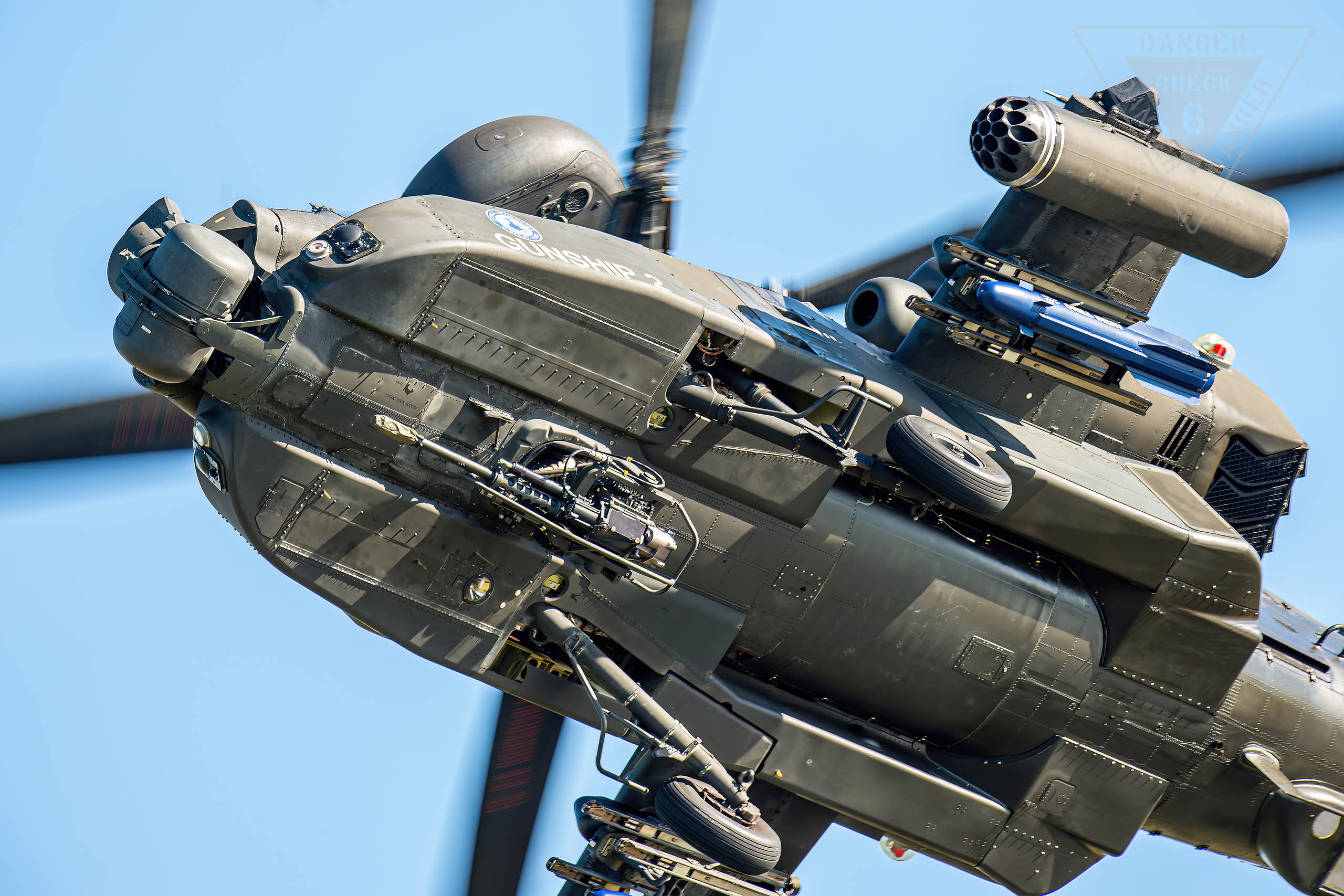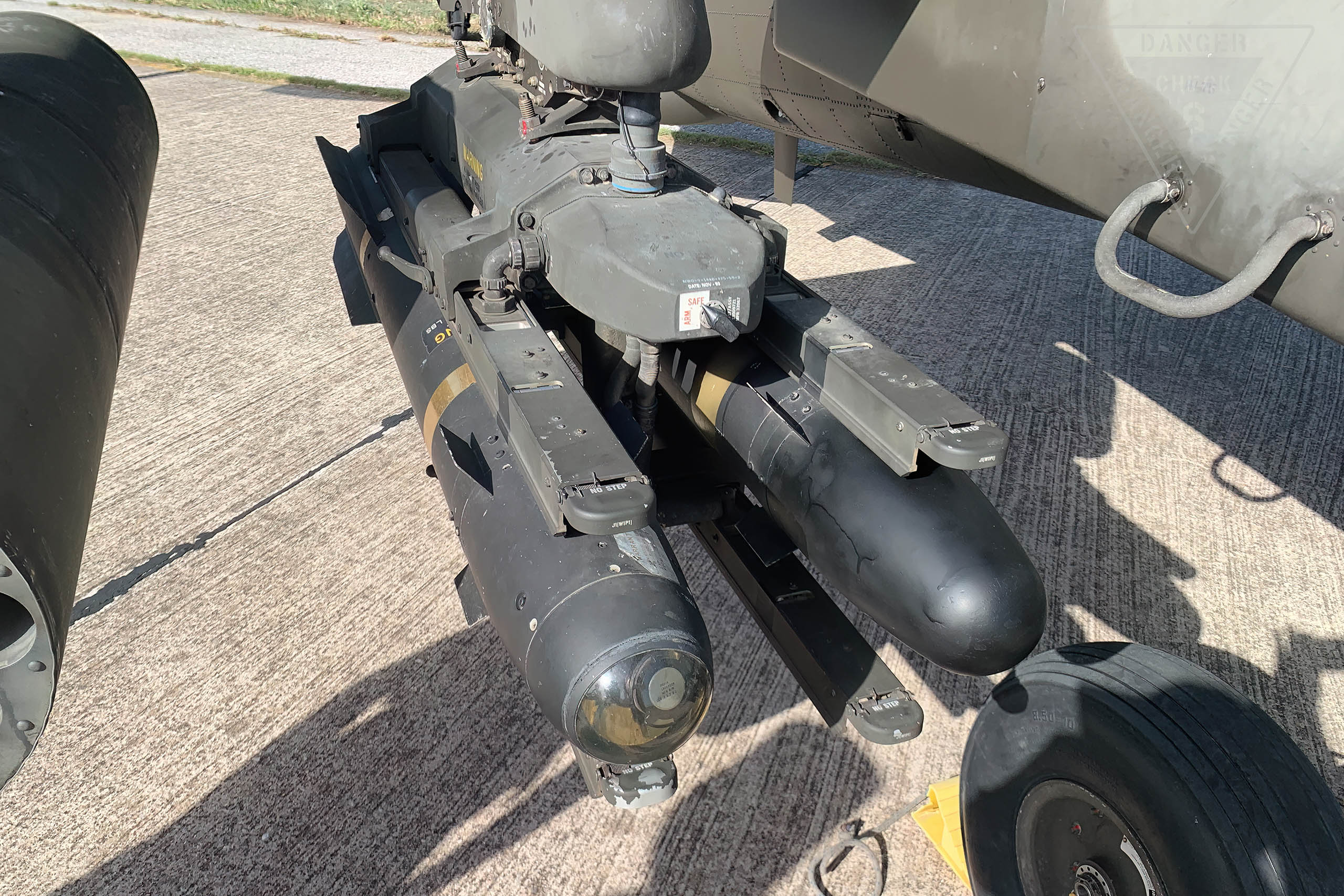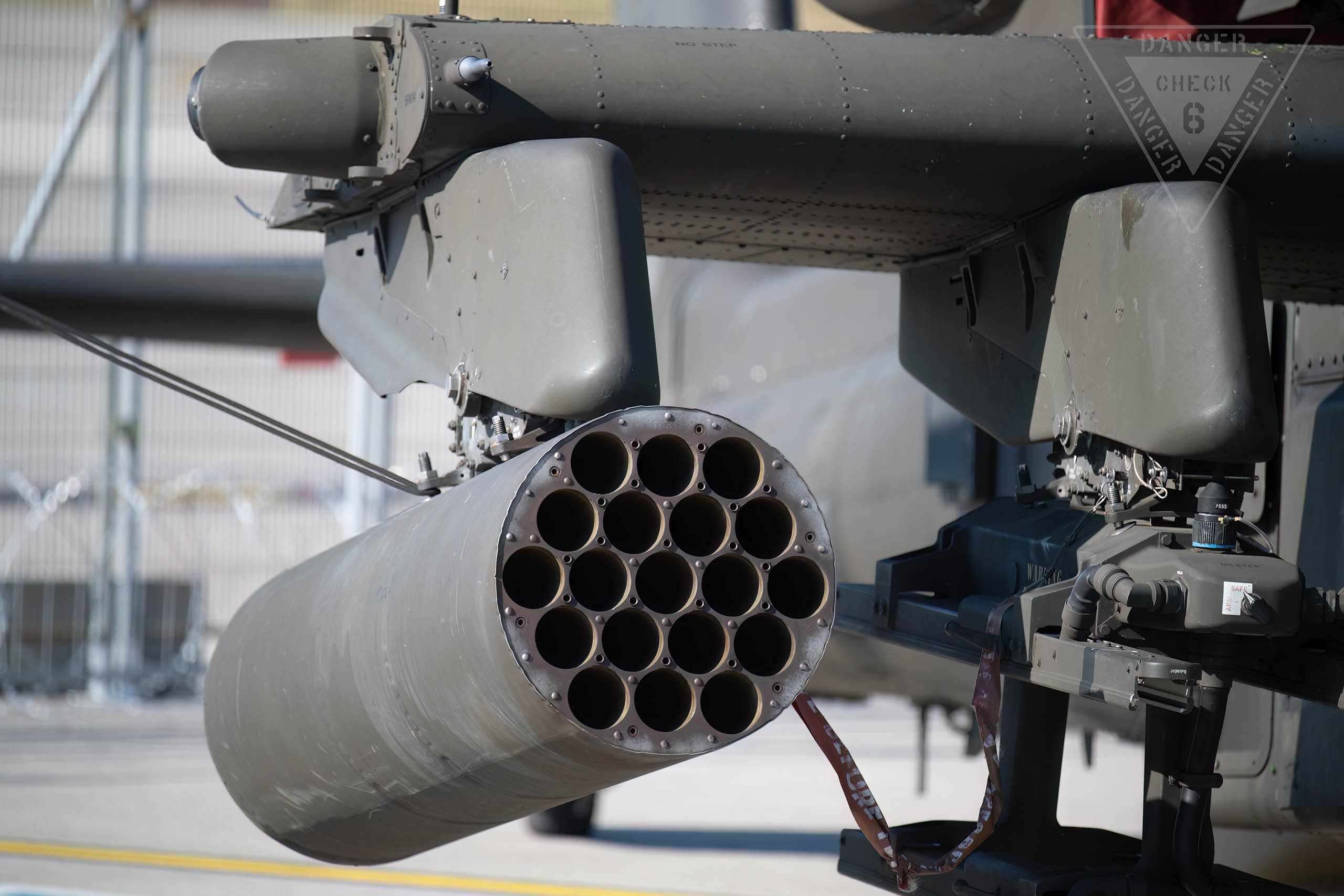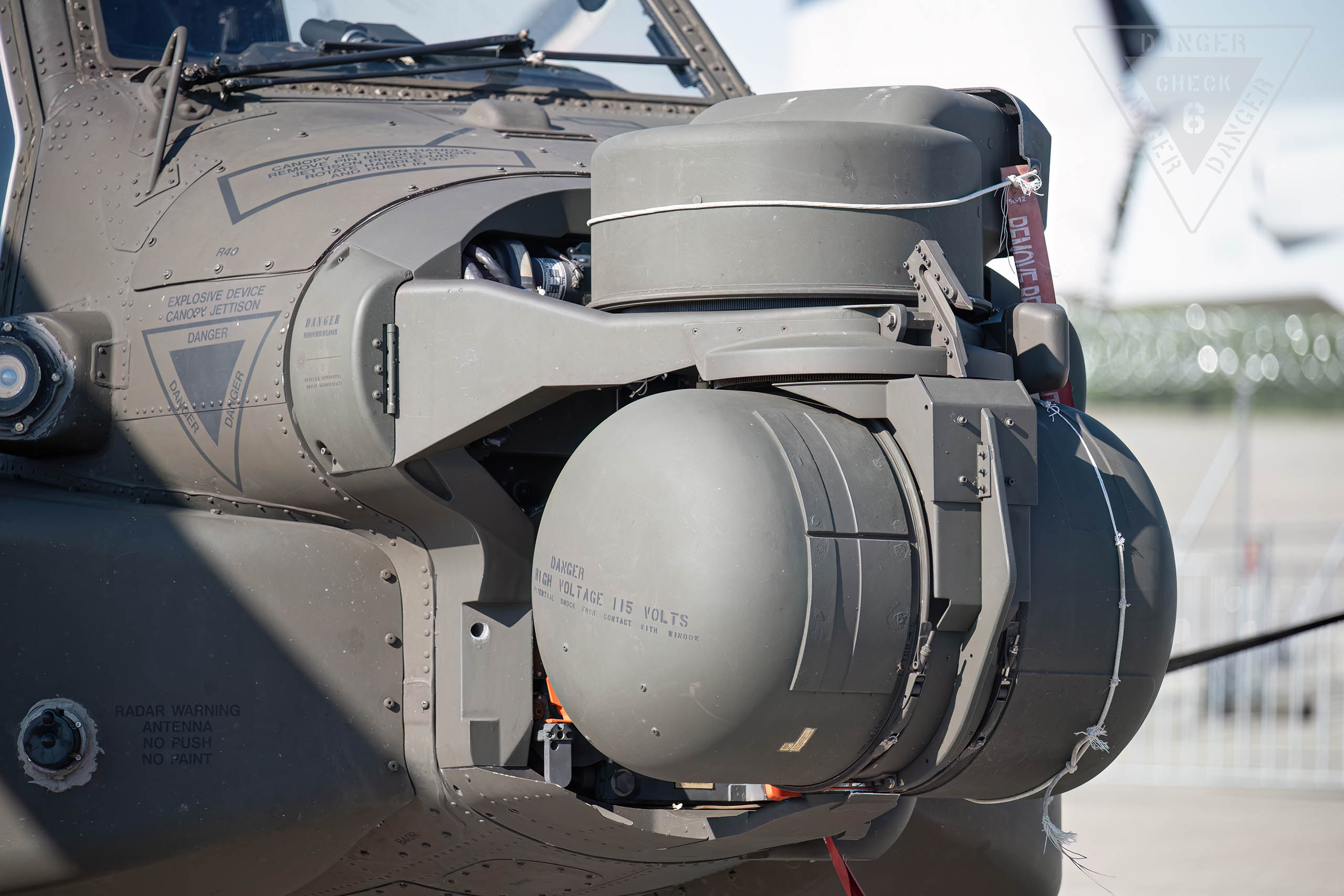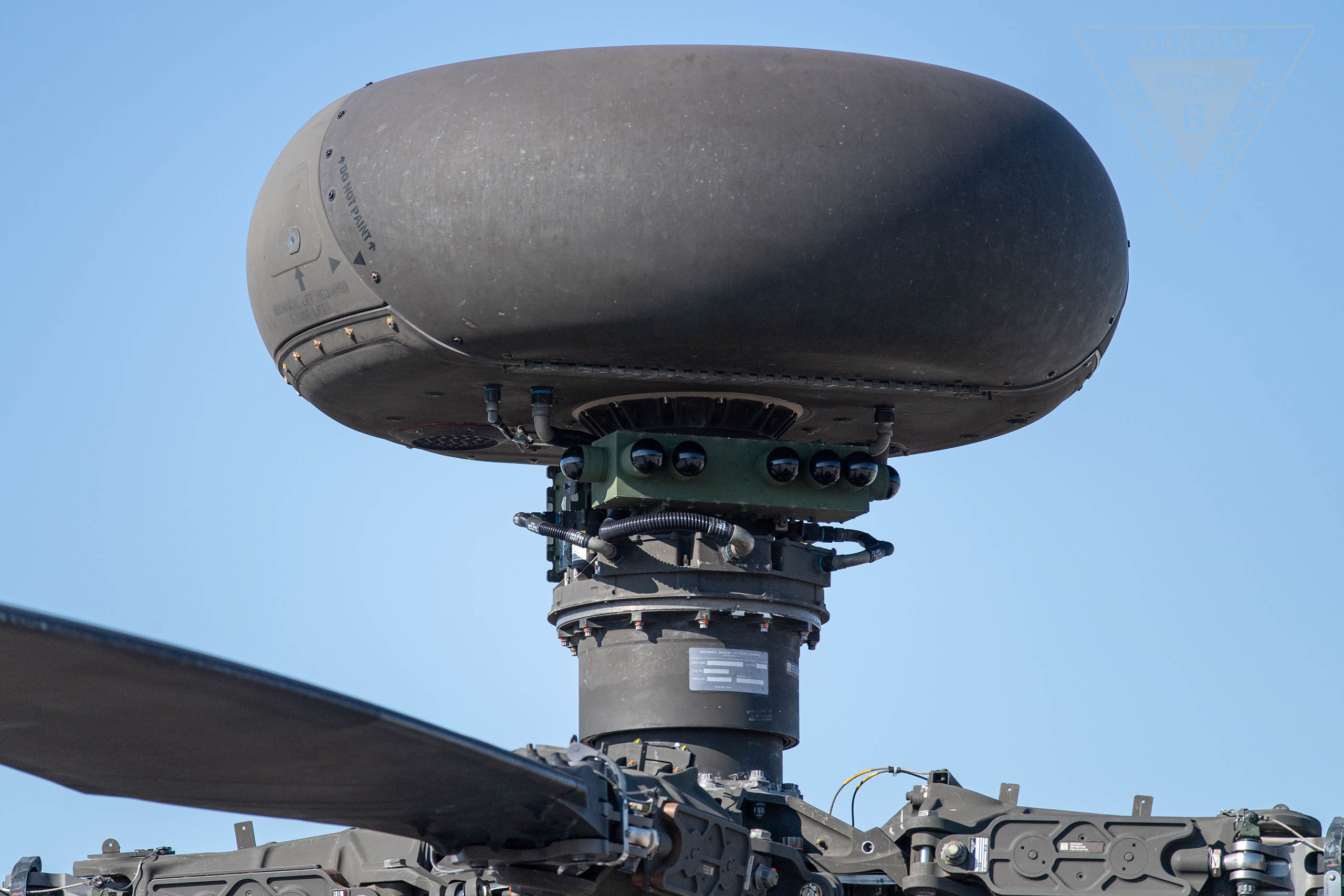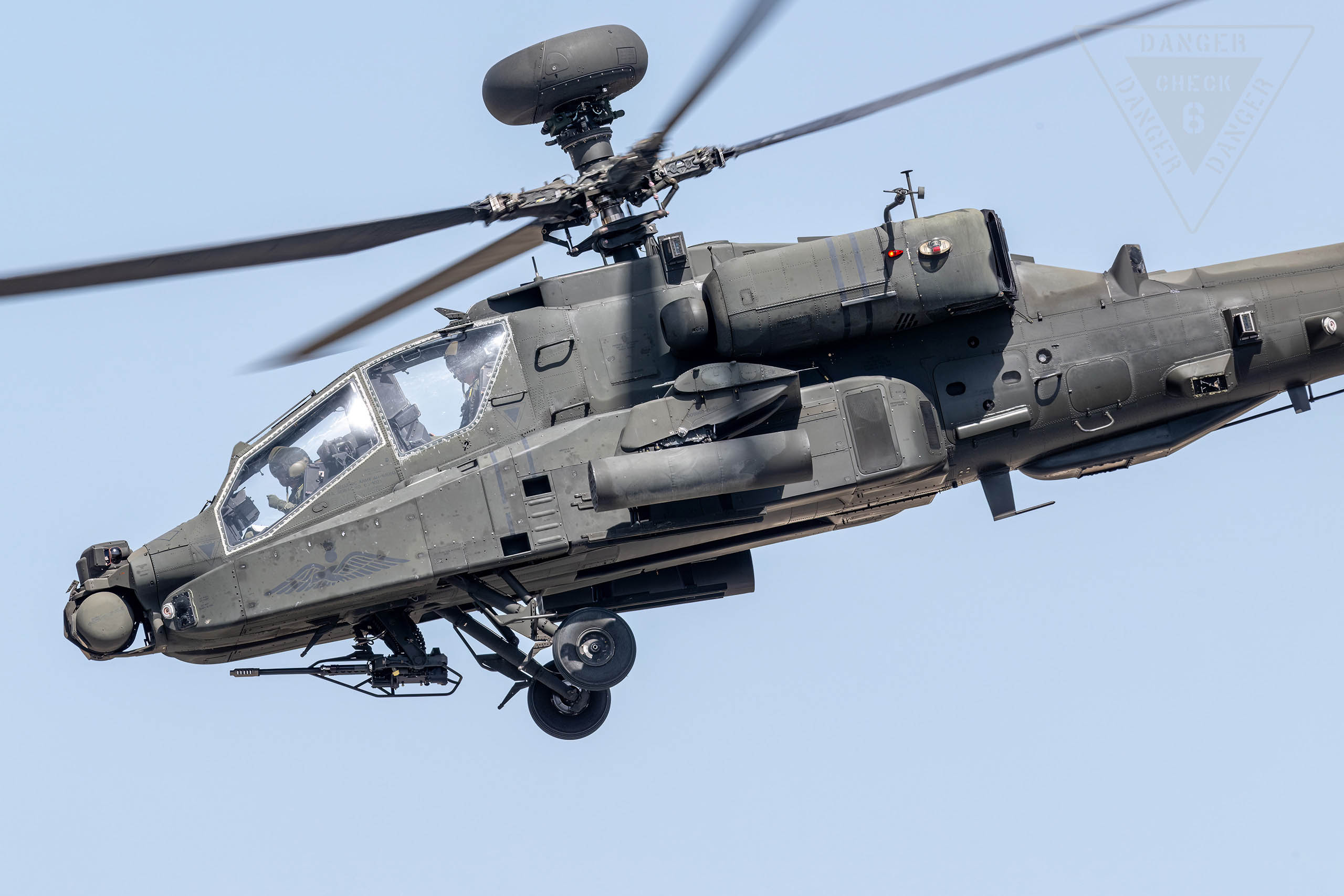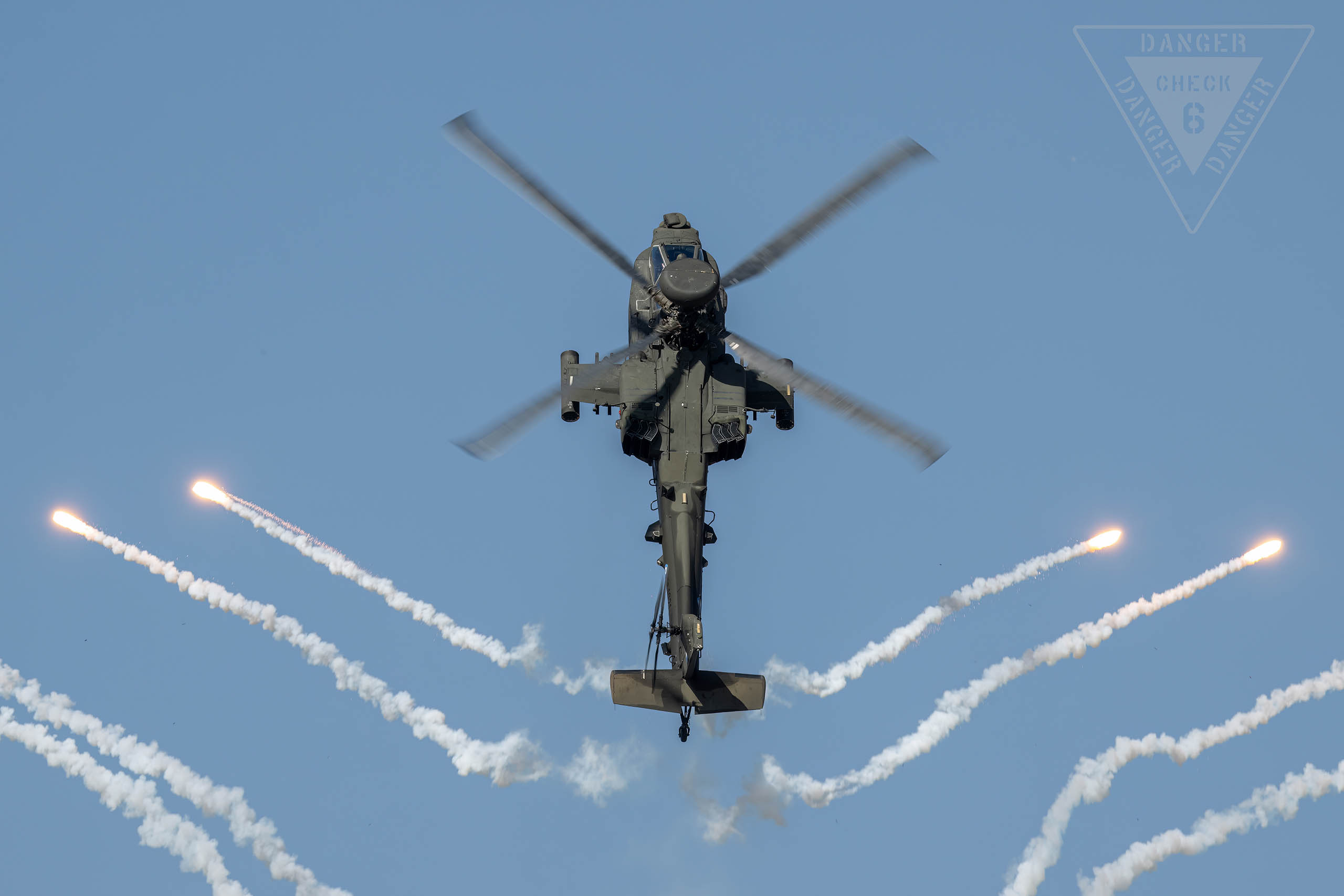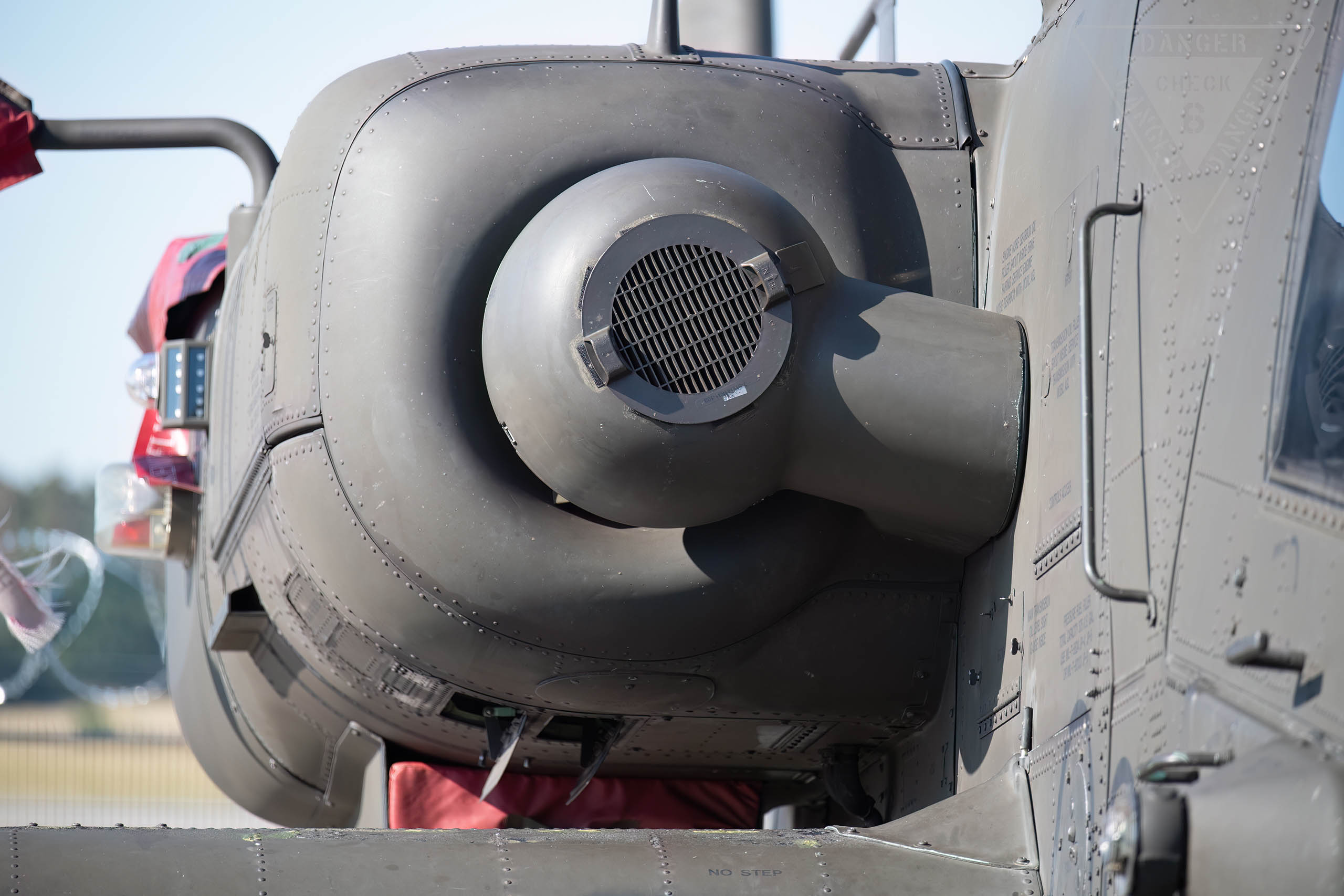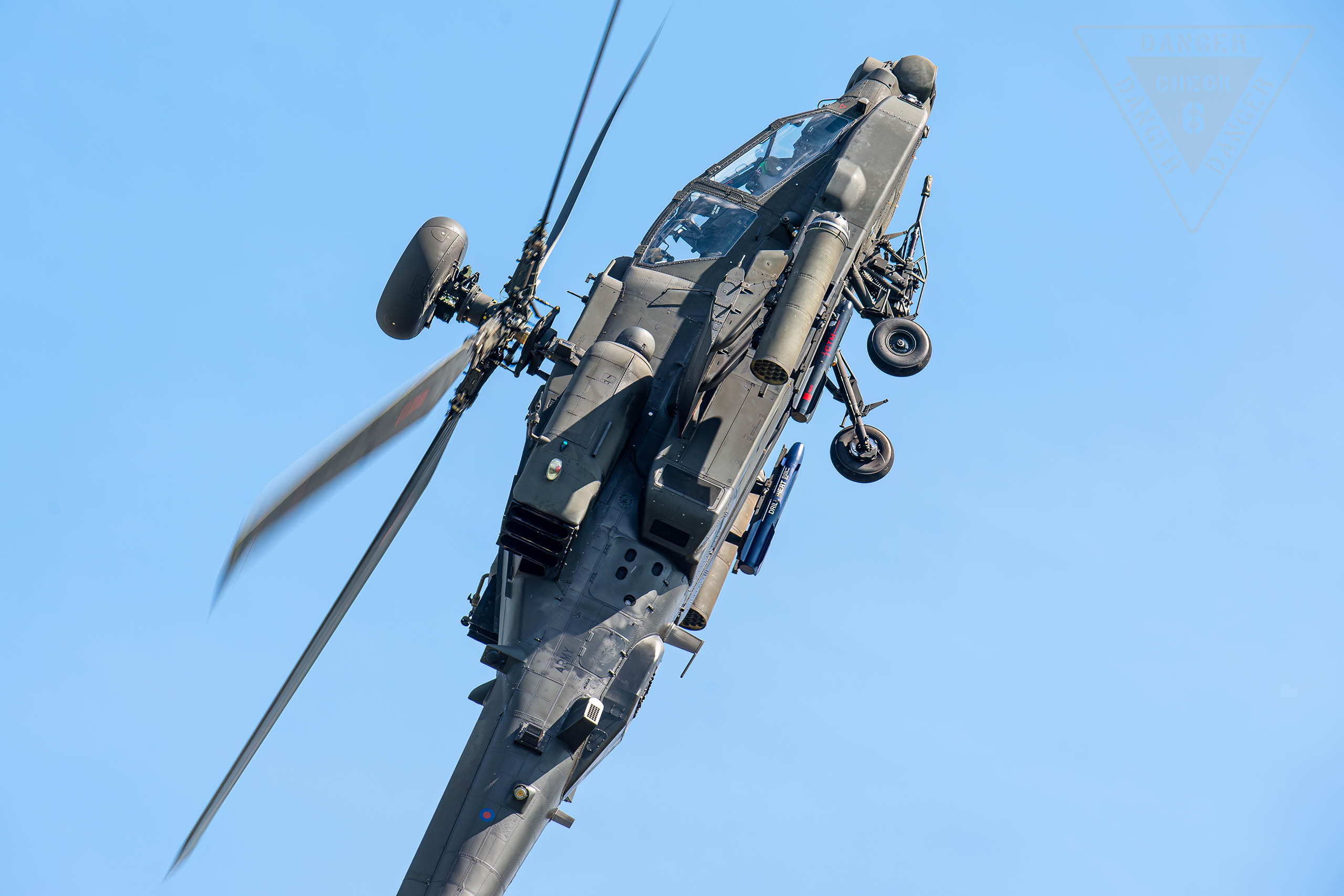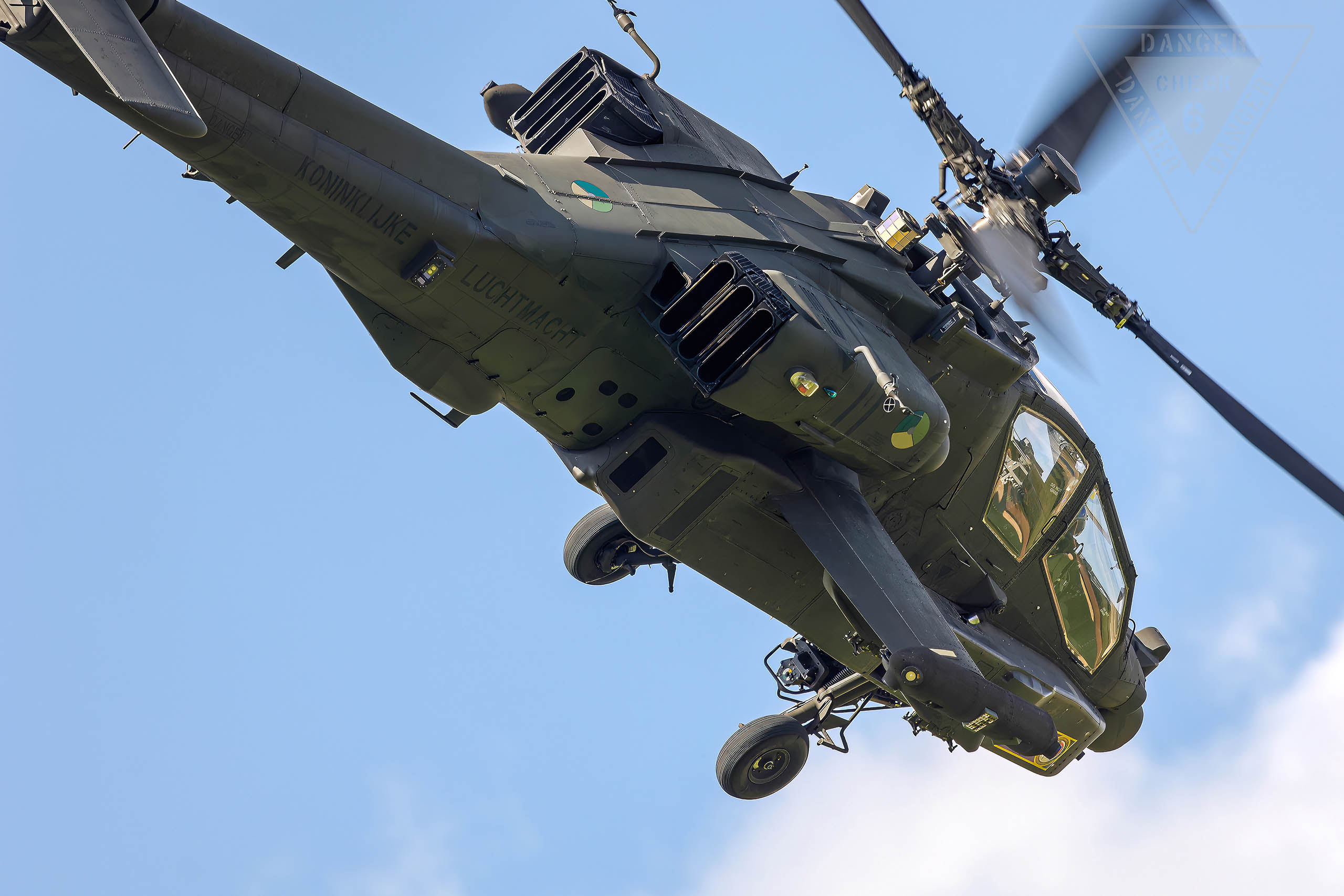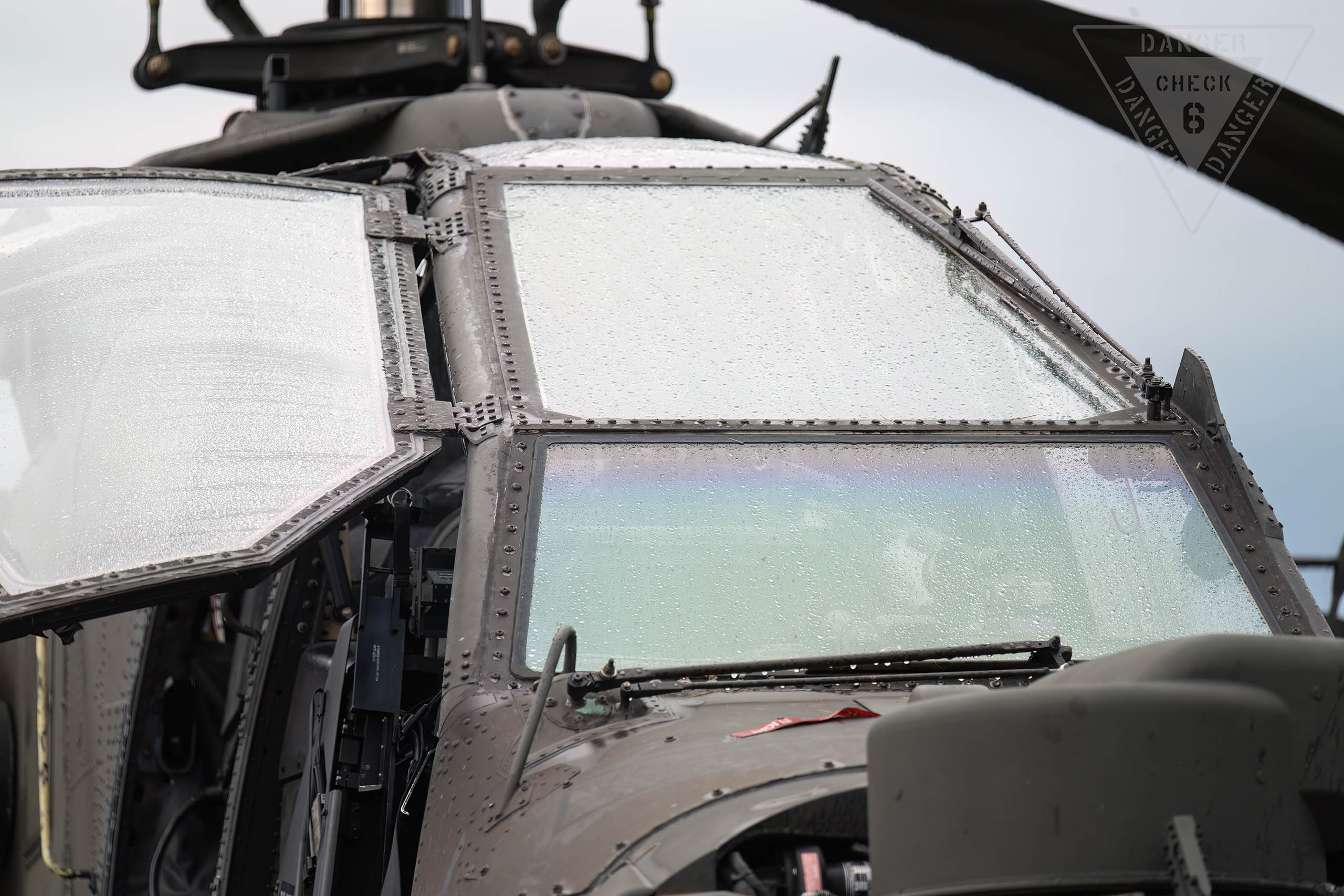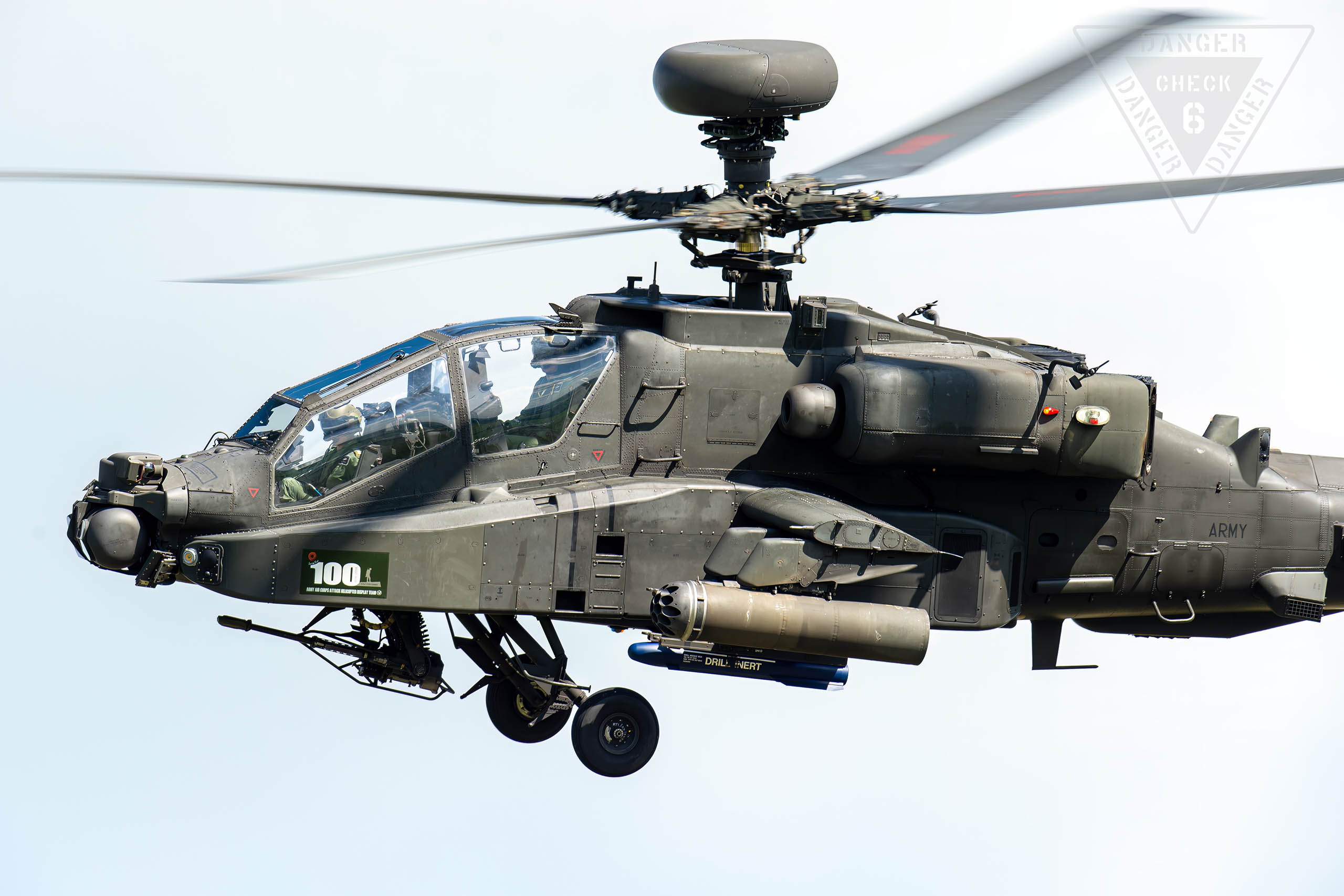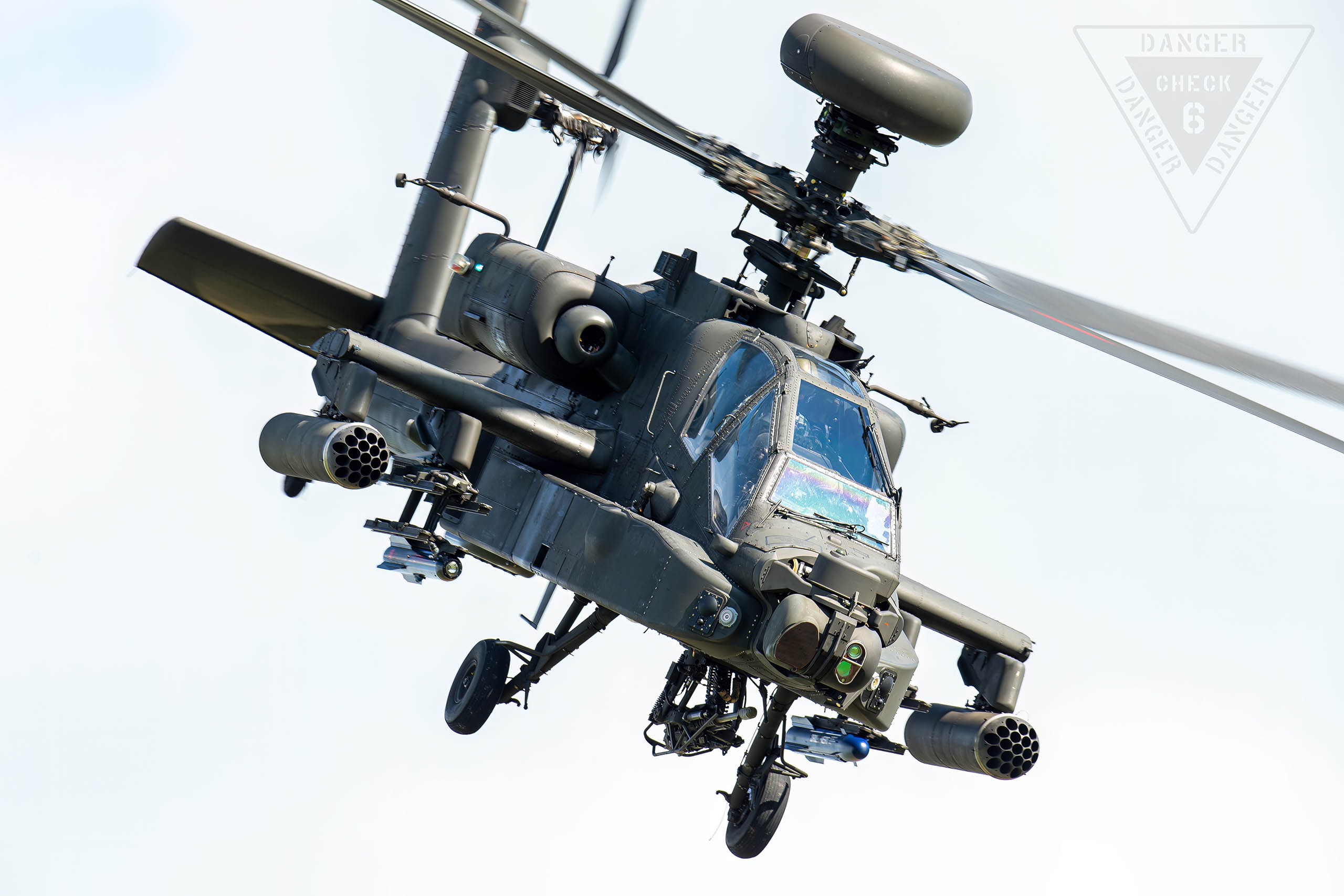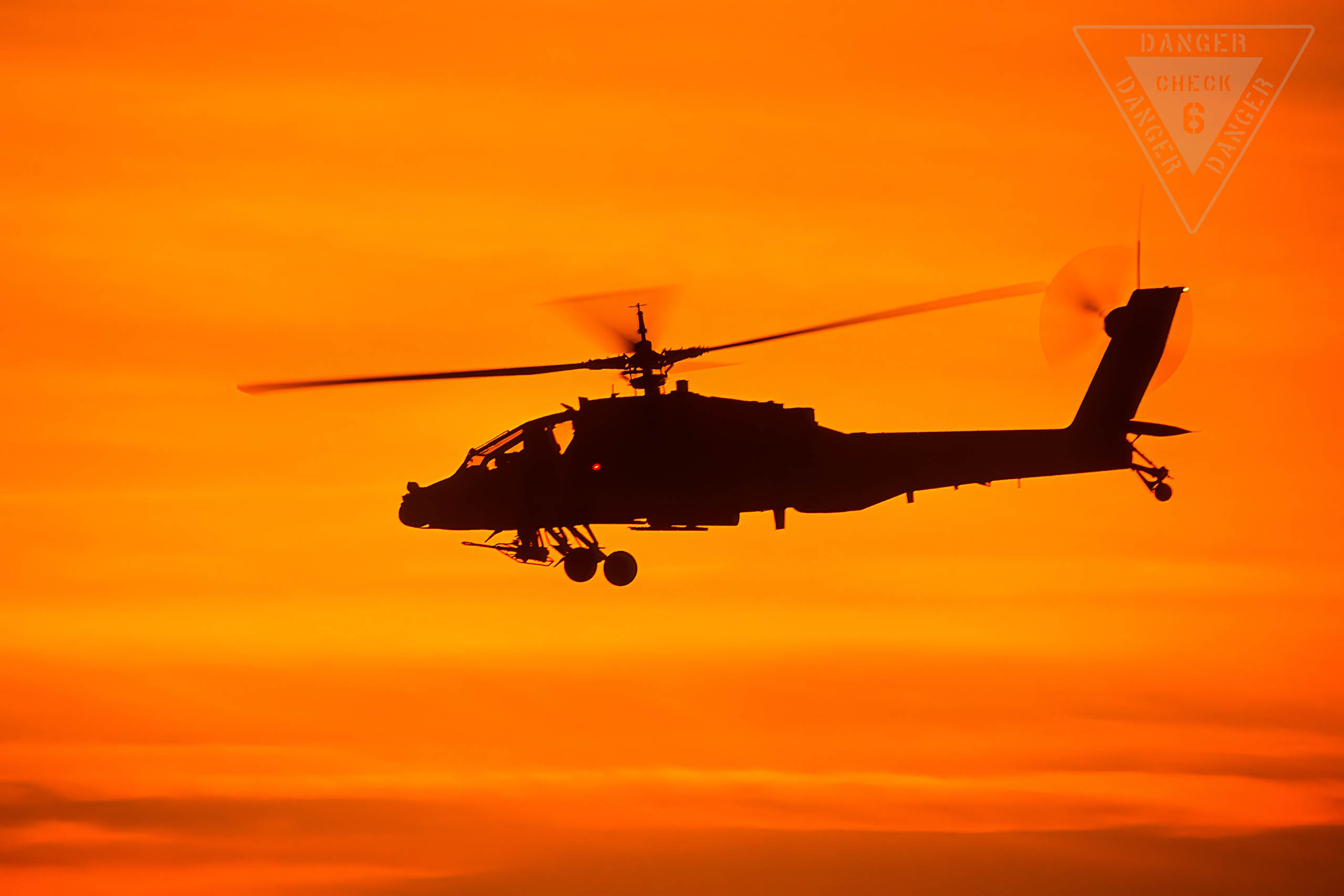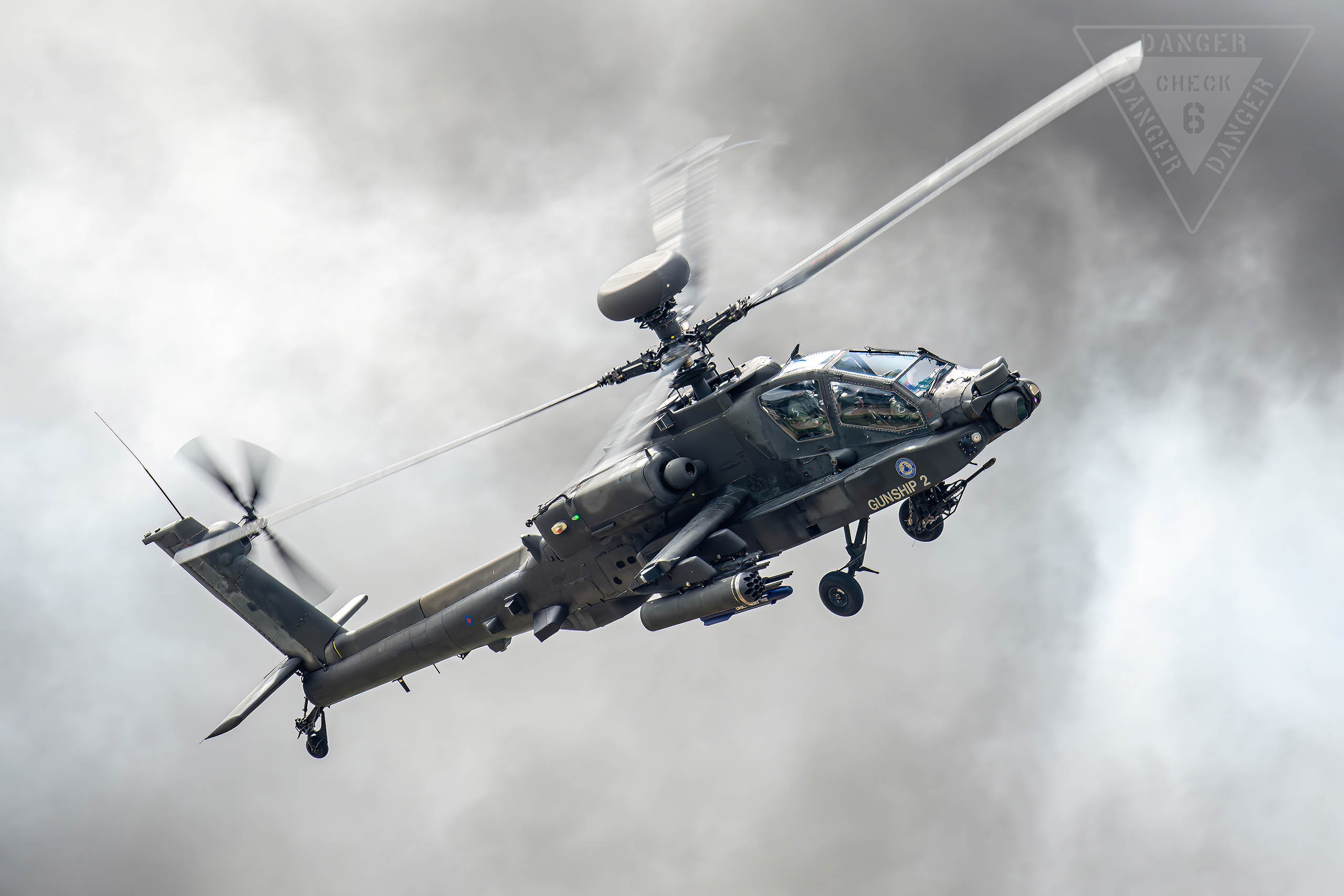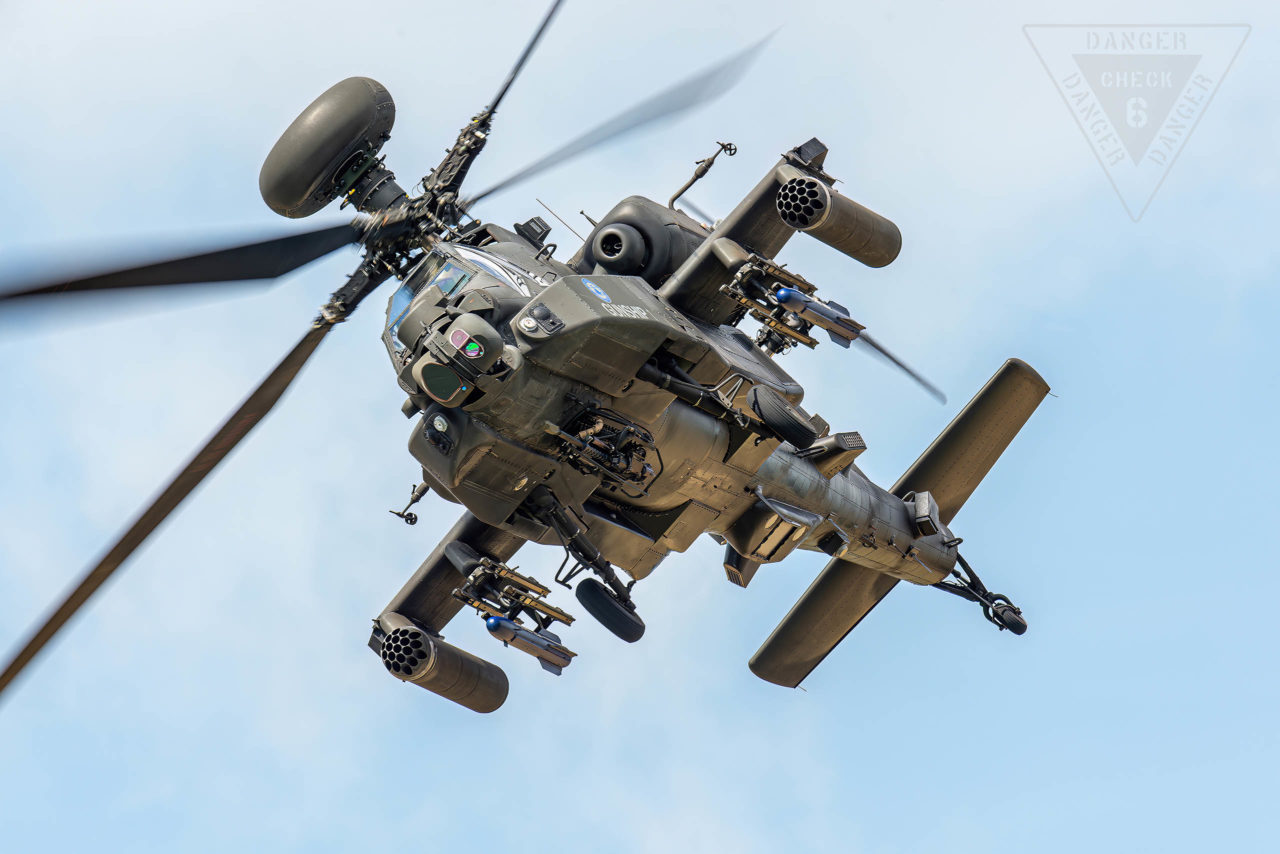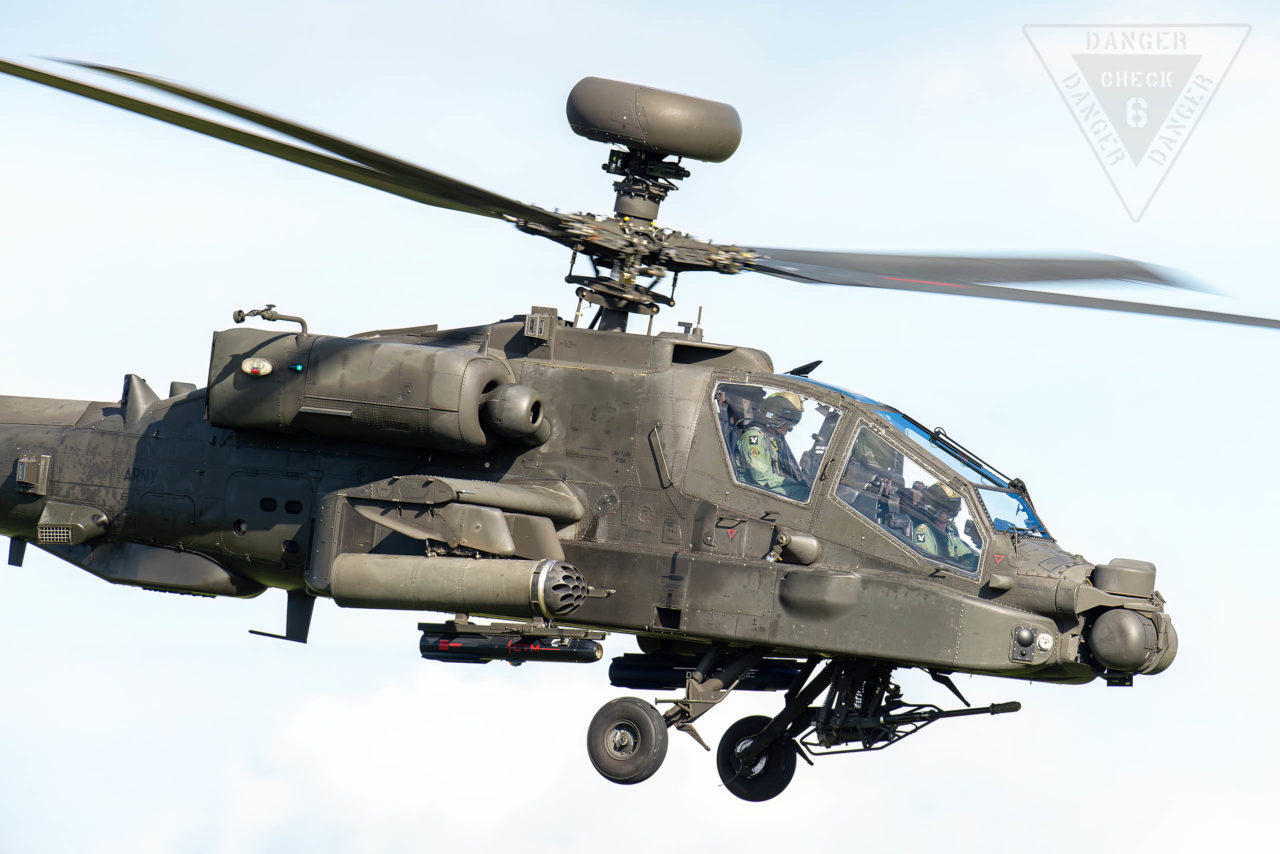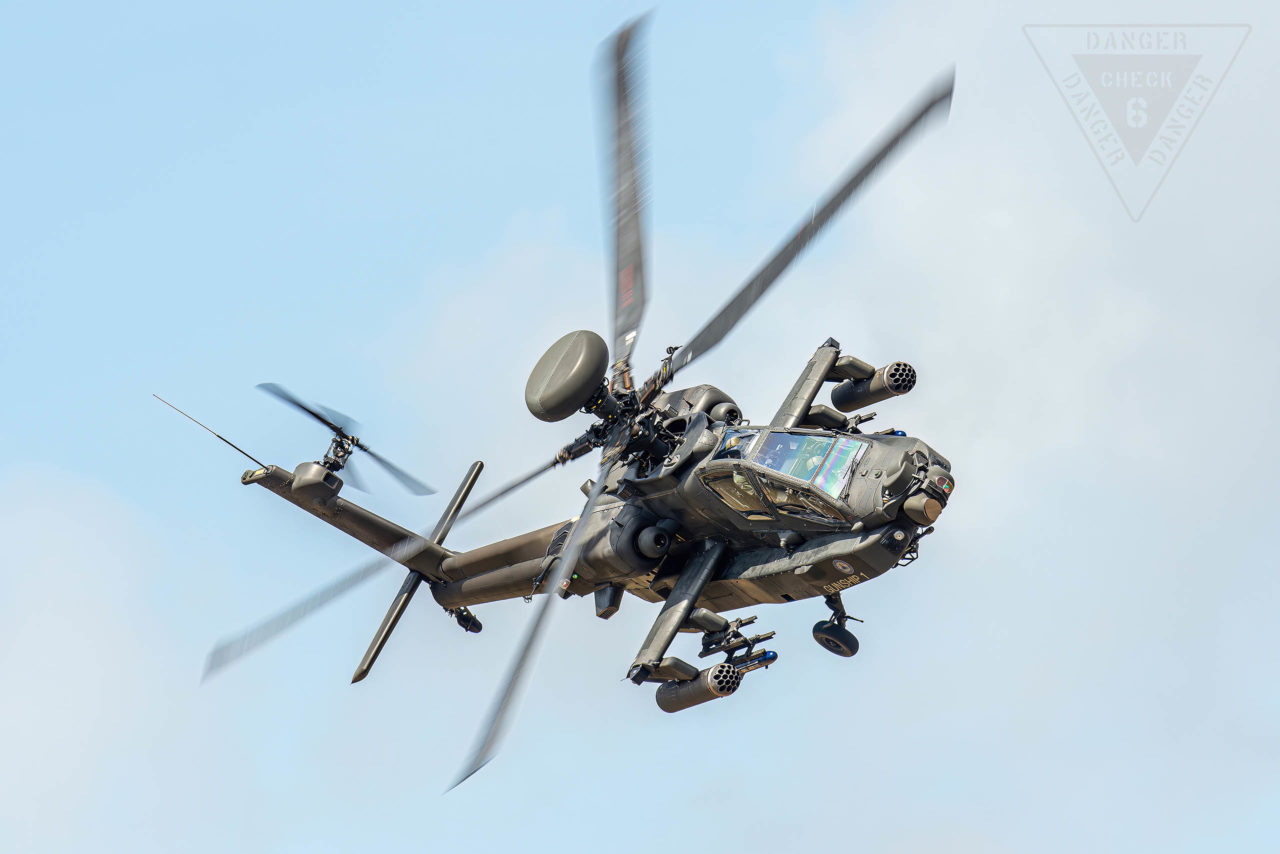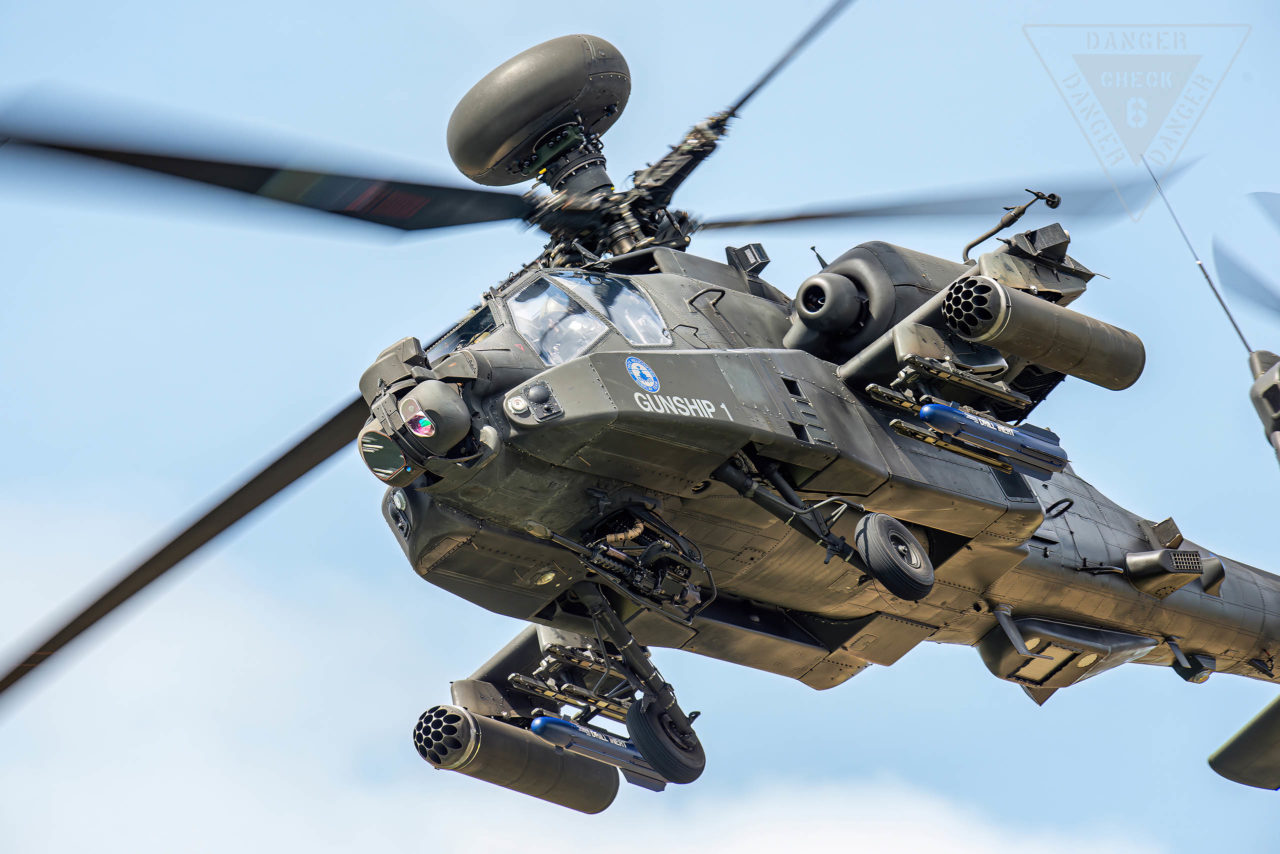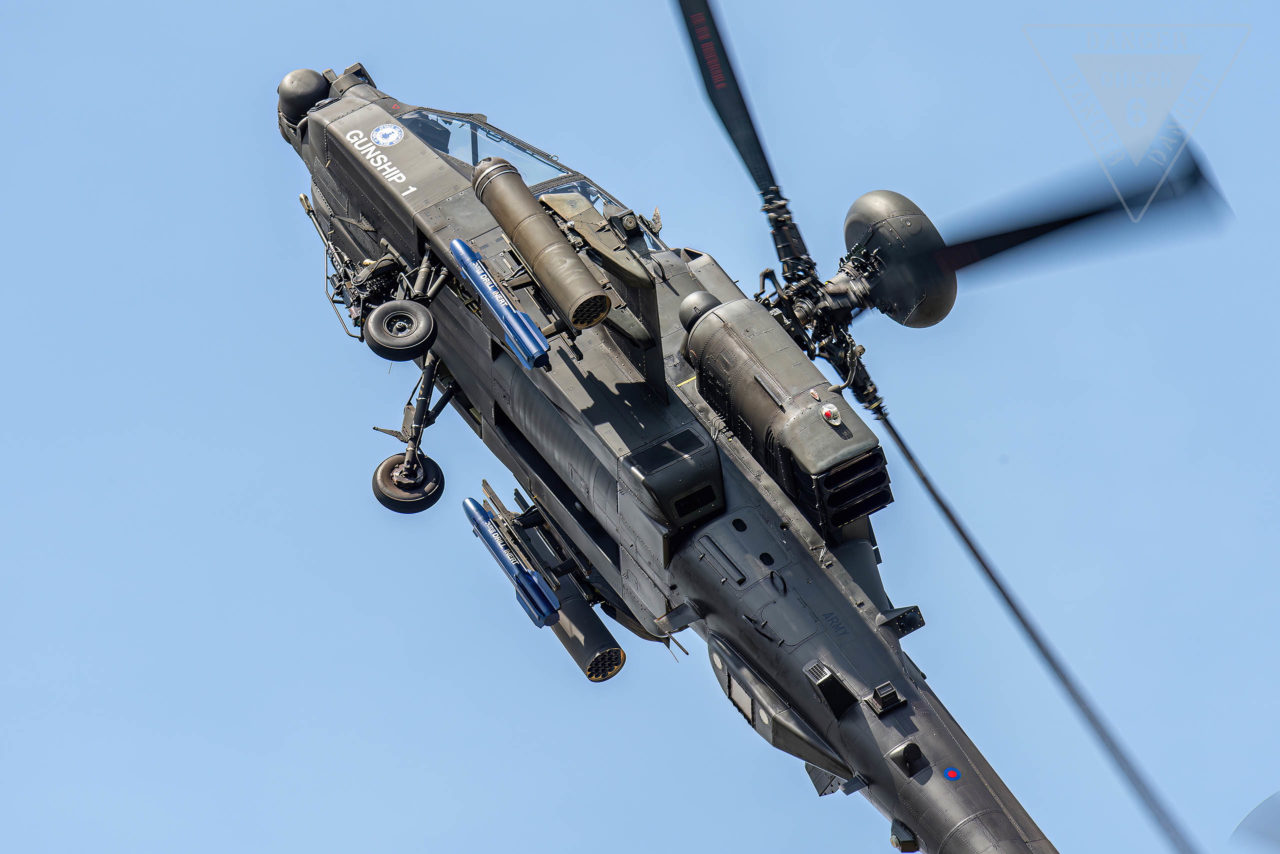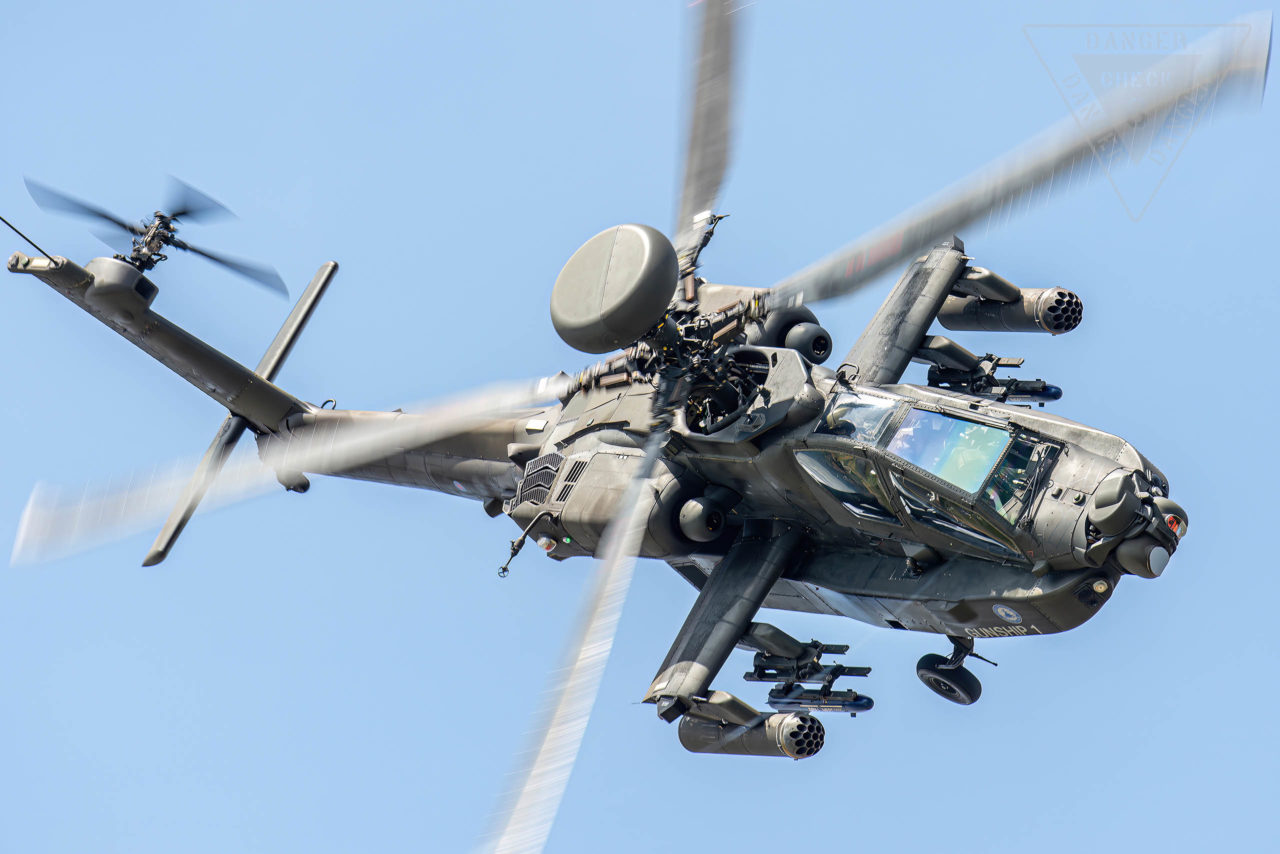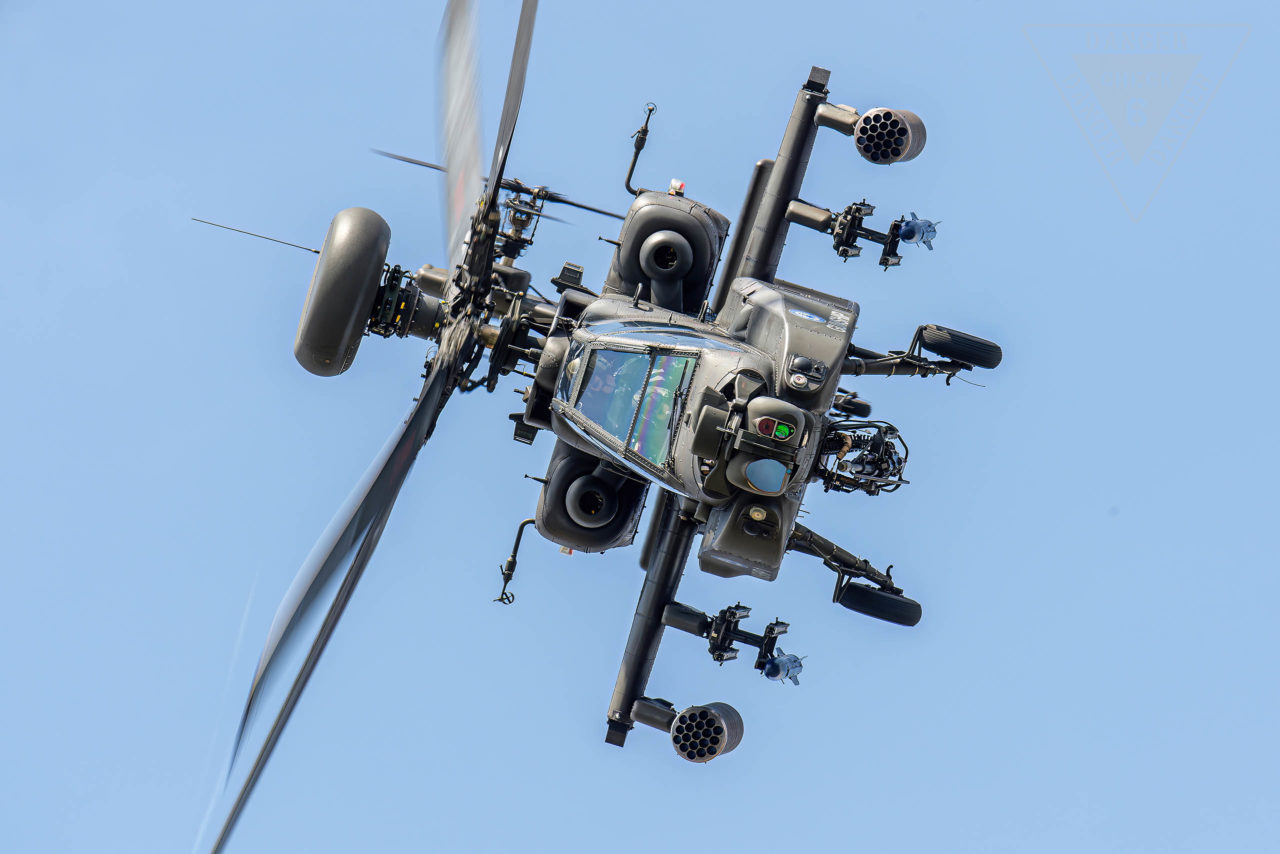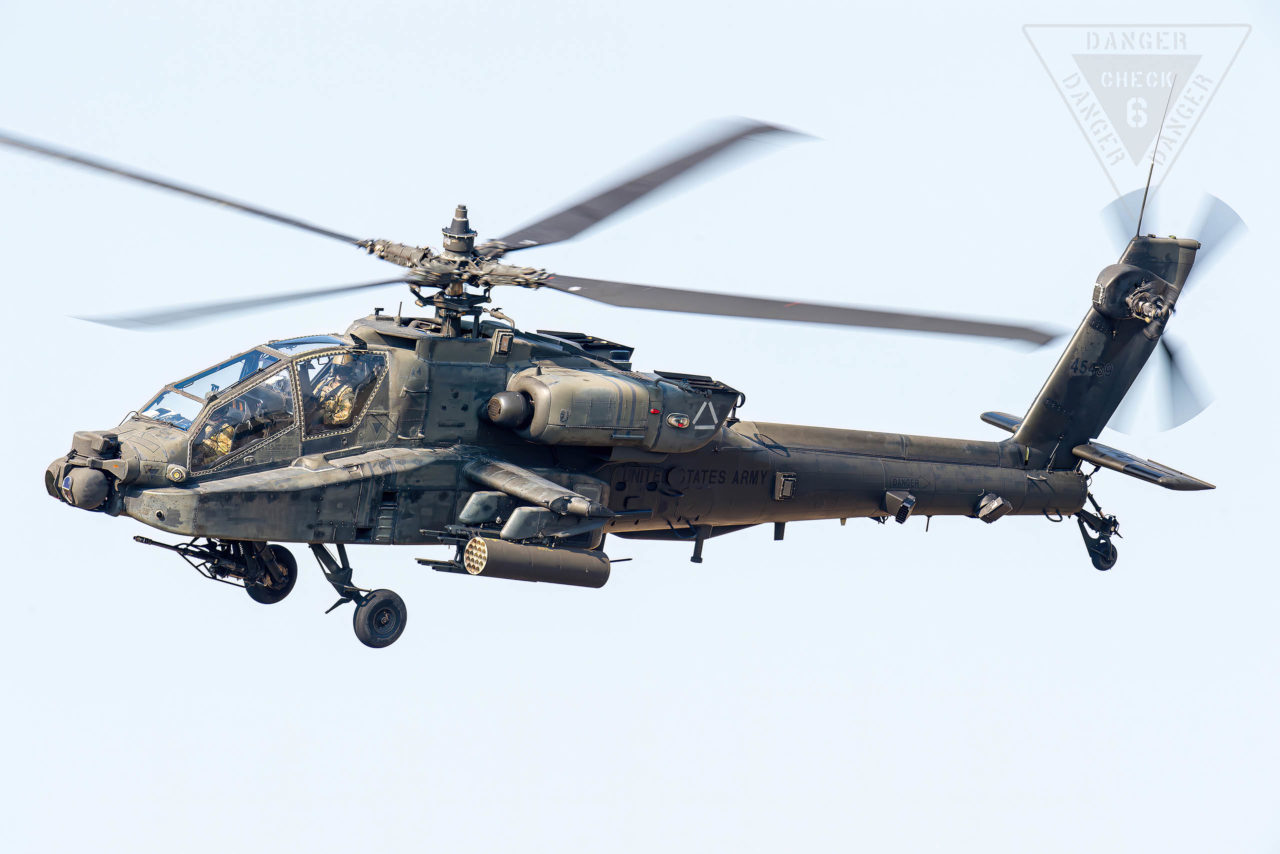PLANES OF FAME: Boeing AH-64 APACHE
Update: 2022/12/10 by Robert Kysela / CHK6
Combat proven, battle tested – this is Boeing’s slogan for the latest variant of its APACHE attack helicopter (AH-64E, version 6). Boeing hits the nail on the head with this slogan – no other attack helicopter can boast a more intense operational career than the AH-64. At most, its counterpart, the Russian Mil Mi-24 (NATO code: HIND) can keep up to a certain point. The APACHE flew its first combat sortie in Panama in 1989. Missions during Operation Dessert Storm (Second Gulf War), the 2003 Iraq War (Operation Iraqi Freedom) and Operation Enduring Freedom in Afghanistan followed. The knowledge gained from these missions, both of a technical and tactical nature, has been incorporated into the ongoing development of this weapon system. The AH-64 has been in service with the U.S. Army since 1986. It is also in service with numerous armies and is certainly the benchmark for all current and future attack helicopter!
The goal was to design a helicopter that was based on the experiences of the Vietnam War and that was capable of standing up to the numerically superior armored units of the Warsaw Pact!
R. Kysela
The AH-64 was based on a U.S. Army Request for Proposal (RFP) called AAH – Advanced Attack Helicopter. In addition to well-known aerospace companies such as Lockheed, Sikorsky, Boeing-Vertol and, of course, Bell Textron, Hughes Helicopters of Culver City, California also participated in the RFP. The goal was to design a helicopter that was based on the experiences of the Vietnam War and that was capable of standing up to the numerically superior armored units of the Warsaw Pact. The high losses of helicopters in Vietnam had shown that the new attack helicopter must have extensive protective measures and correspond to the current operational doctrine of the Army, which provided for the combined use of units on the ground as well as in the air not only during the day but also at night. For this purpose, the helicopter had to be equipped with a number of sensors that would enable the pilot to operate even in complete darkness.
The YAH-64 prototype made its first flight on September 30, 1975, and Bell Textron's YAH-63 flew for the first time just one day later.
R. Kysela
The YAH-64 prototype made its first flight on September 30, 1975, and Bell Textron’s YAH-63 flew for the first time just one day later. After an intensive flight test program, the Army selected Hughes Helicopters’ YAH-64 as the winning bidder on December 10, 1976. The entire development process did not go quite as smoothly as the U.S. Army envisioned. Various changes to the design and, above all, delays in the development of the sensor system ensured that it took eight years to the day before the first combat helicopter, now called the APACHE, was handed over to the U.S. Army.
Hughes developed a brandnew 30 mm gun especially for the AH-64, which was designated the M230. This is a so-called chain gun. The ammunition feed, loading, firing and ejection of the shell is controlled by a chain drive, which in turn is powered by a 2 hp electric motor. The advantage of this system is its higher reliability, at least as far as jamming is concerned. An unfired cartridge is simply ejected and thus does not jam the loading process. The weapon has a theoretical firing rate of 625 (+/-25) rounds per minute. The crew can preset different rates of fire (10, 20, 50, 100 rounds or continuous fire). After firing approx. 300 rounds, however, the gun must be cooled for a considerable time (approx. 10 min). Fully chambered, an APACHE carries 1,160 rounds of ammunition. This is unfortunately to the disadvantage of the range. When using an auxiliary fuel tank (called a Robby tank), only 300 rounds of ammunition can be carried. The maximum effective operational range of the M230 is between 1,500 and maximum 1,700m. The primary ammunition used is an M789 High Explosive Dual Purpose (HEDP) projectile, which can penetrate armor up to 25mm and disintegrates on impact with the target.
The original specification (AAH) called for the use of TOW anti-tank guided weapons. This is a wire-guided missile in which a control wire was unwound after firing, allowing the gunner to steer the guided rocket into the target. This meant that the target had to be aimed by the gunner throughout the missile’s whole flight time. The range of such a guided missile was inherently limited. Therefore, the U.S. Army changed its specification for the main standoff weapon of its future attack helicopter. The Rockwell AGM-114 HELLFIRE guided missile, also under development, was provided as an alternative. The name HELLFIRE is made up of the terms HELicopter + Launched + FIRE & forget. This features a semi-active laser targeting system (or an active radar-based guidance system – AGM-114L Longbow HELLFIRE). These highly accurate missiles enable the AH-64 to effectively engage a target at ranges up to 8,000m. However, the laser-guided variant requires the gunner to aim at the target with a homing laser. This is no longer necessary with the radar-guided variant. In this case, it is a pure Fire & Forget weapon, which tracks and fights the target completely independently after firing. In total, an Apache can carry up to 16 AGM-114 HELLFIRE missiles, giving it tremendous firepower.
In addition, an APACHE can also carry up to 76 Hydra 70 missiles. These are carried in a container designated as M261 with a capacity of 19 missiles each (normally two missile containers are carried on an AH-64). The Hydra 70 has a variety of warheads, ranging from a 3.9 kg HE (High Explosive – M151) to White Phosphorus for target marking (M156) and so-called flechettes (M255). The latter are steel projectiles (arrows) that are extremely effective primarily against human targets and are therefore highly controversial. One Hydra 70 missile contains 1,179 of these deadly arrows!
The eyepiece allows the pilot to keep all flight and weapons-related information in view at all times.
R. Kysela
The heart of the AH-64 is its sensor system TADS/PNVS (TADS = Target Acquisition and Designation System / PNVS = Pilot’s Night Vision Sensor). These consists of an electro-optical camera, infrared camera (FLIR – Forward Looking InfraRed), and a laser spot tracker & laser range finder/designator. With this system, the APACHE crew is able to locate a human target up to a distance of 4000 meters. The camera image can be magnified up to 127 times. All relevant data is transmitted to Multi Purpose Displays (MPD) or directly to an eyepiece of the Honeywell M142 helmet sight (IHADSS – Integrated Helmet and Display Sighting System). The eyepiece allows the pilot to keep all flight and weapons-related information in view at all times. While the AH-64A had one multifunction display, the new D- and E-Series models will incorporate two 6.25 x 6.25 inch multi-purpose displays.
The Longbow version has a mast-mounted sight in which an AN/APG-78 fire control radar (FCR) is located, which operates in the millimeter wave band (Ka-band/26.5-40 GHz). Thus compensates for the biggest disadvantage of the TADS/PNVS – its position at the bottom of the AH-64. To bring the sensor system to bear, the pilot must move his aircraft out of cover, which exposes him to enemy forces. The mast -mounted sight allows the pilot to move his aircraft out just a little behind cover (a house, a tree, etc.), keeping him in relative safety. With the Longbow-FCR the AH-64 can detect and classify up to 128 targets and engage 16 of them simultaneously. In addition, a Longbow-APACHE operating in concert with other AH-64¥s can share its radar data with them via an integrated radio modem, allowing them to deploy all of their armament in a coordinated manner.
The UK operates a total of 67 AH.Mk 1s, which will be replaced by the latest variant, the AH-64E APACHE GUARDIAN.
R. Kysela
The AH-64E APACHE GUARDIAN is powered by two General Electric T700-GE-701D gas turbines which deliver 1,940 shp of power (emergency power in the event of failure of one engine: 2,000 shp for max. 2.5 min). The AH-64E thus has sufficient power reserves. The most powerful variant of the AH-64 is the AH.Mk1 built under license by the British company AgustaWestland. This is basically an AH-64D equipped with Rolls Royce/Turbomeca RTM322 turbines. These not only deliver a whopping 30% more power (2,160 shp) compared to the T700-GE-701C version (1,890 shp) installed in the D model, but are also equipped with digital engine control (FADEC = Full Authority Digital Engine Control). The British version also has folding rotor blades so that it can operate from Royal Navy carrier units. The UK operates a total of 67 AH.Mk 1s, which will be replaced by the latest variant, the AH-64E APACHE GUARDIAN.
An enormously important part of any attack helicopter is its self-protection system. In case of the AH-64, this consists of a whole series of measures. A weighty part of it is not even recognizable as a protection system. For example, the use of long-range ammunition or longbow radar not only serves the purpose of staying technically ahead of the enemy, but also ensures that the APACHE can carry out its mission from an ever greater distance and under relatively safe cover. Other protective measures are of a passive nature, such as the redundant design of elementary systems (e.g. hydraulic system, dual engine configuration, etc.) or the shielding or cooling of engine gases to reduce the infrared signature. This system, called Black Hole IR suppressor, of the AH-64, this is so effective that the exhaust gas temperature, which is around +800C°, is cooled down to such an extent that it is possible to put one’s hand into the exhaust gas stream while the engine is running without burning the skin. Parts of the AH-64, such as the seats, are armored. The rotor blades, which are made of a composite material, are also reinforced so that they can withstand small arms fire without much damage. Another important part is the landing gear, which has to withstand an impact of the helicopter at a descent rate of 12.8m/sec. Numerous electronic jamming measures, M130 CHAFF dispensers but also flares complete the safety concept of the AH-64 (however, flares at low altitude are relatively useless against modern ground-to-air missiles, but they are always spectacular at airshows).
It was actually AH-64s of the 101st Airborne Division that fired the first shots on 17 January 1991, opening Operation Desert Storm.
R. Kysela
THE APACHE made its operational debut in Panama in 1989, but it really proved its worth in the Second Gulf War. It was actually AH-64s of the 101st Airborne Division that fired the first shots on 17 January 1991, opening Operation Desert Storm. This opening night strike proved to be very successful, taking out two key Iraqi radar and early warning stations. In the course of the ground offensive, AH-64s then destroyed 278 tanks, close to 500 vehicles, as well as more than 100 artillery positions and numerous other relevant targets (this information comes from a 1992 U.S. General Accounting Office report). However, the deployment also revealed various shortcomings of this weapon system. For example, there were repeated problems with the 30 mm gun but also with the TADS/PNVS. Another problem was due to the sand, which is found almost everywhere in this region and sometimes has a very negative effect on mechanical moving parts. The losses in the II Gulf War with the AH-64s were absolutely limited. Just one AH-64 was shot down by an RPG-7 fired from a relatively close range in Gulf War II, and in the 2003 Iraq war there were two losses due to direct enemy action. However, it is fair to say that in these conflicts the AH-64 did not exactly have to deal with highly motivated, well-trained opponents, equipped with state-of-the-art weapons. In the Afghanistan war, the balance of power was no different. The Taliban had little to oppose a D-model or the British AH.Mk1, not to mention the LONGBOW version. The U.S. Army is fully aware of this and is currently forcing the conversion and re-procurement of the most modern variant of the APACHE – the AH-64E v6 APACHE GUARDIAN.
VERDICT: While the first APACHE could still be described as an “analog” aircraft, the ECHO variant is fully digitized, with comprehensive additional functions such as the ability to operate in conjunction with UAVs – the so-called Loyal Wingman Concept (MUM-T = Manned/Unmanned Teaming). The implementation of the U.S. Army’s new doctrine, the MDO concept (Multi-Domain Operation) and the associated comprehensive networking of all units and systems is also fully realized in the ECHO model. As mentioned at the beginning of this article, the Boeing AH-64 APACHE combat helicopter is the benchmark in this field and will remain so for a very long time – at least until well beyond the middle of this century!!
Robert Kysela / CHK6

